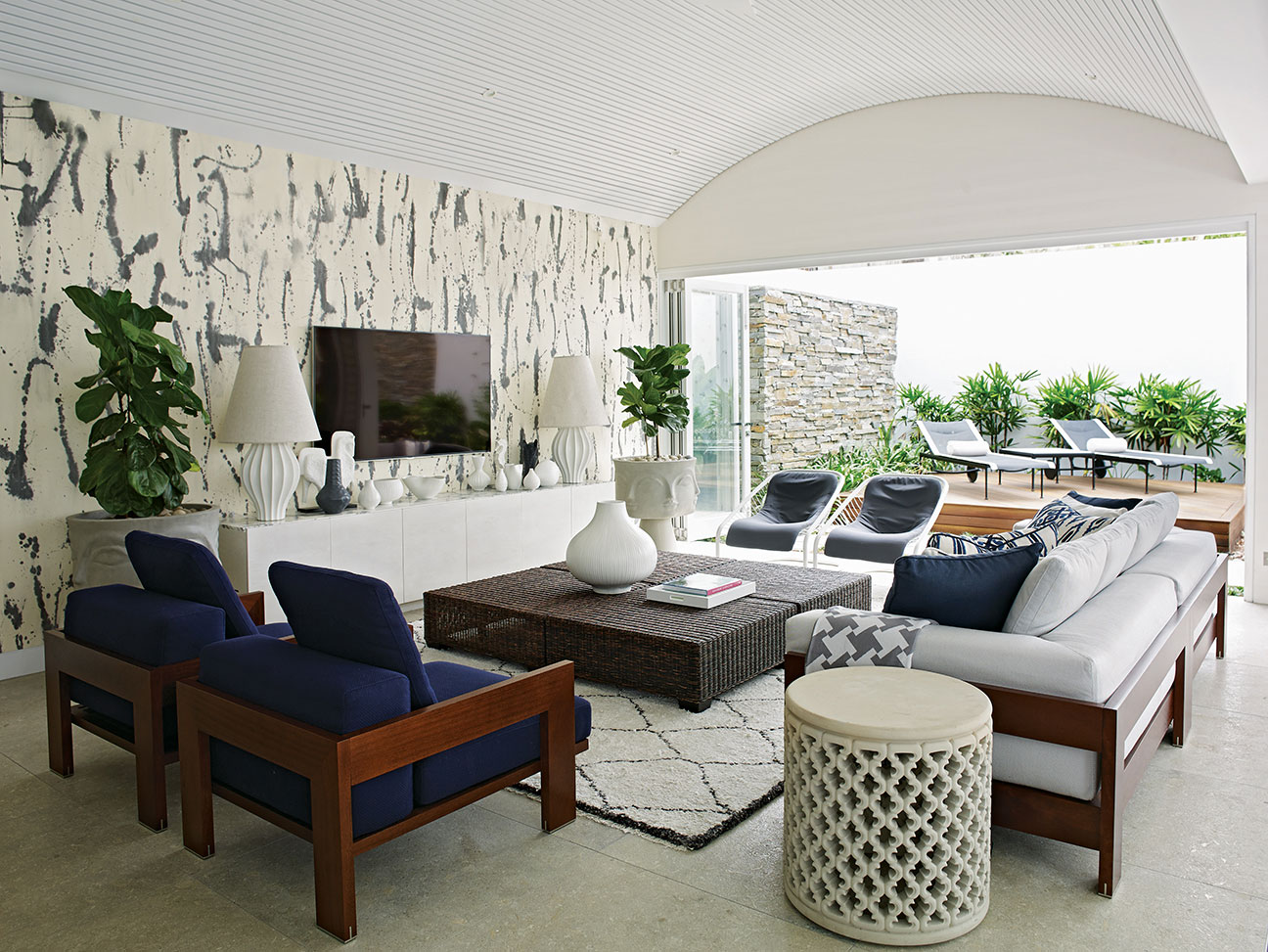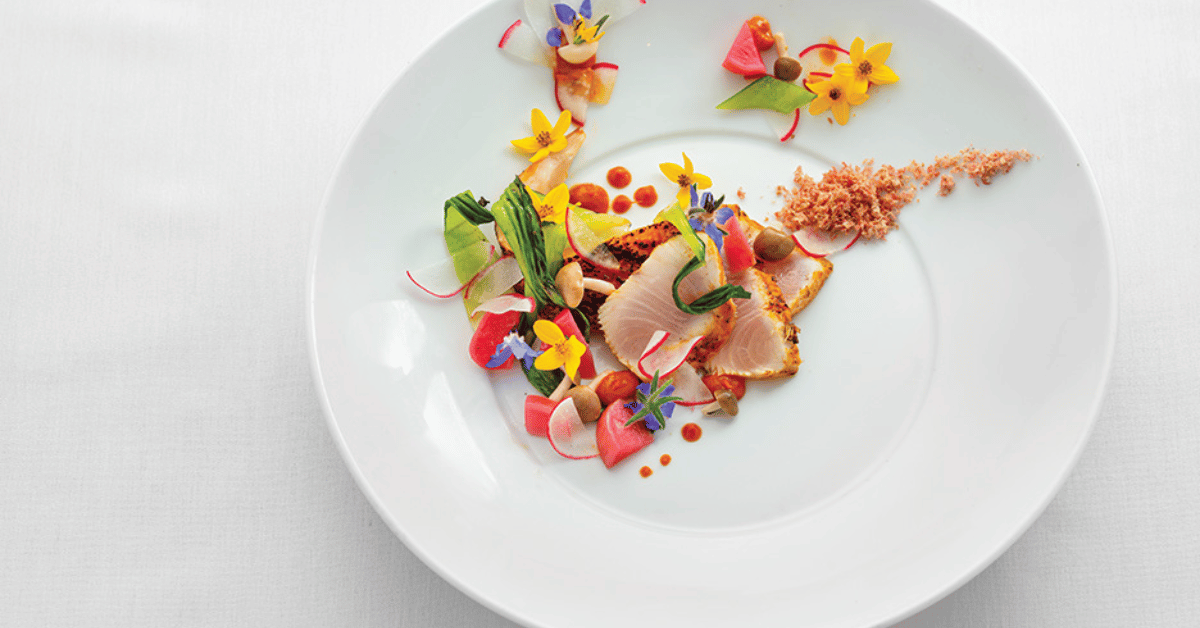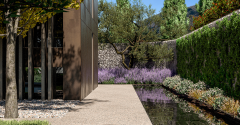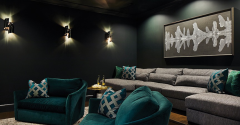When it comes to maximalist design, more is definitely more, and walls are no exception. We’re not going back to the retro chintz of bygone eras, instead, current wallpaper patterns are bold, edgy, fun and available in huge variety.
Oversized tropical leaves, prancing golden zebras, floral prints in a neon palette, animal prints, geometric shapes… even world maps designed to fit whole walls.
They’re becoming huge works of art within a room with many wallpaper designs taking inspiration from famous artists — Van Gogh, Matisse, Andy Warhol to name a few. Wallpaper designs are refusing to fade into the background.
So how are home designers putting the trend into practice? Bold wallpaper creates a huge impact so it tends to be the starting point for a room design. One or two statement walls is often enough. They’re striking without being overpowering.
Dark colors, big patterns, embracing the bold wallpaper trend requires bravery, but the courageous are able to create unique rooms full of life and edgy charm.
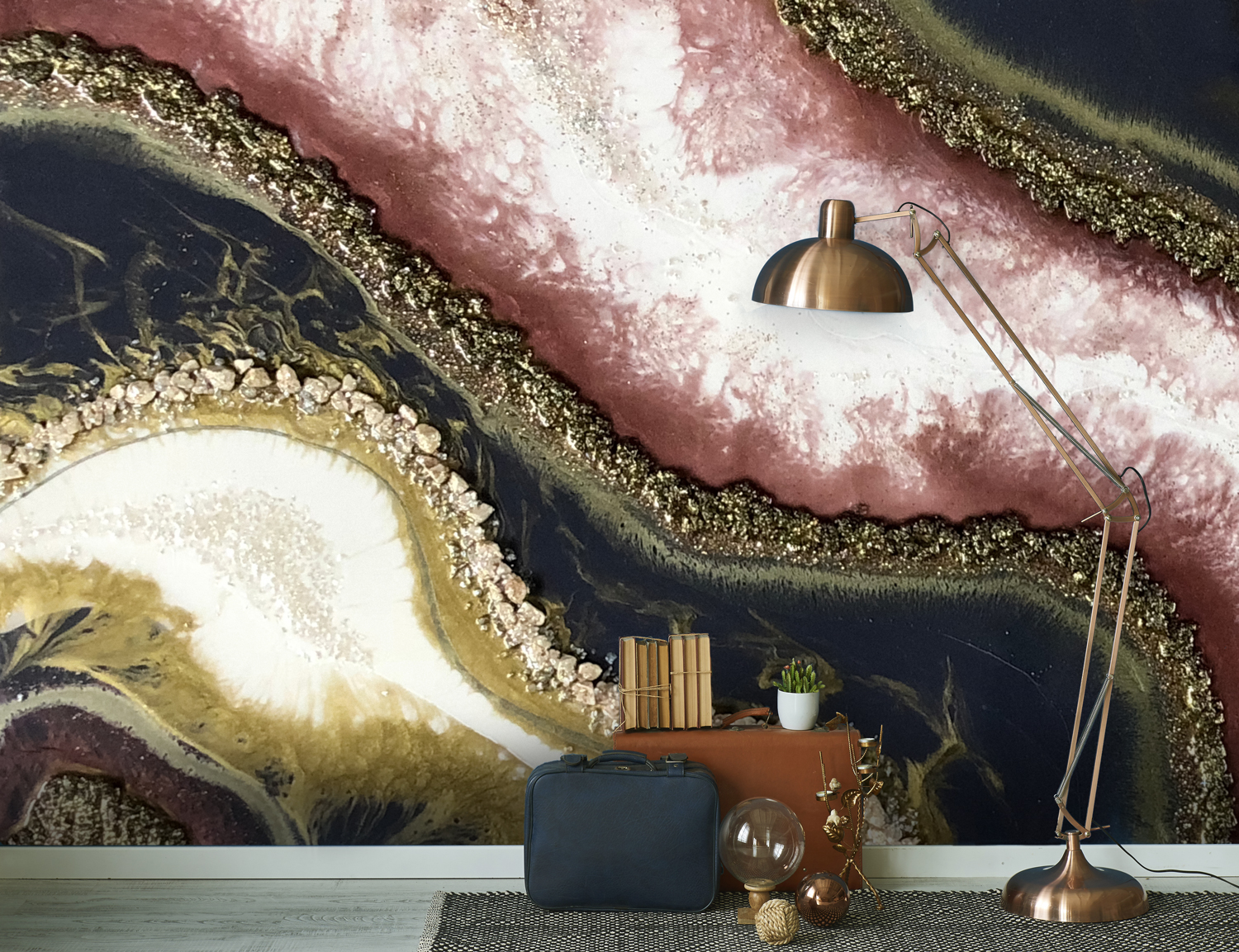
wallsauce.com
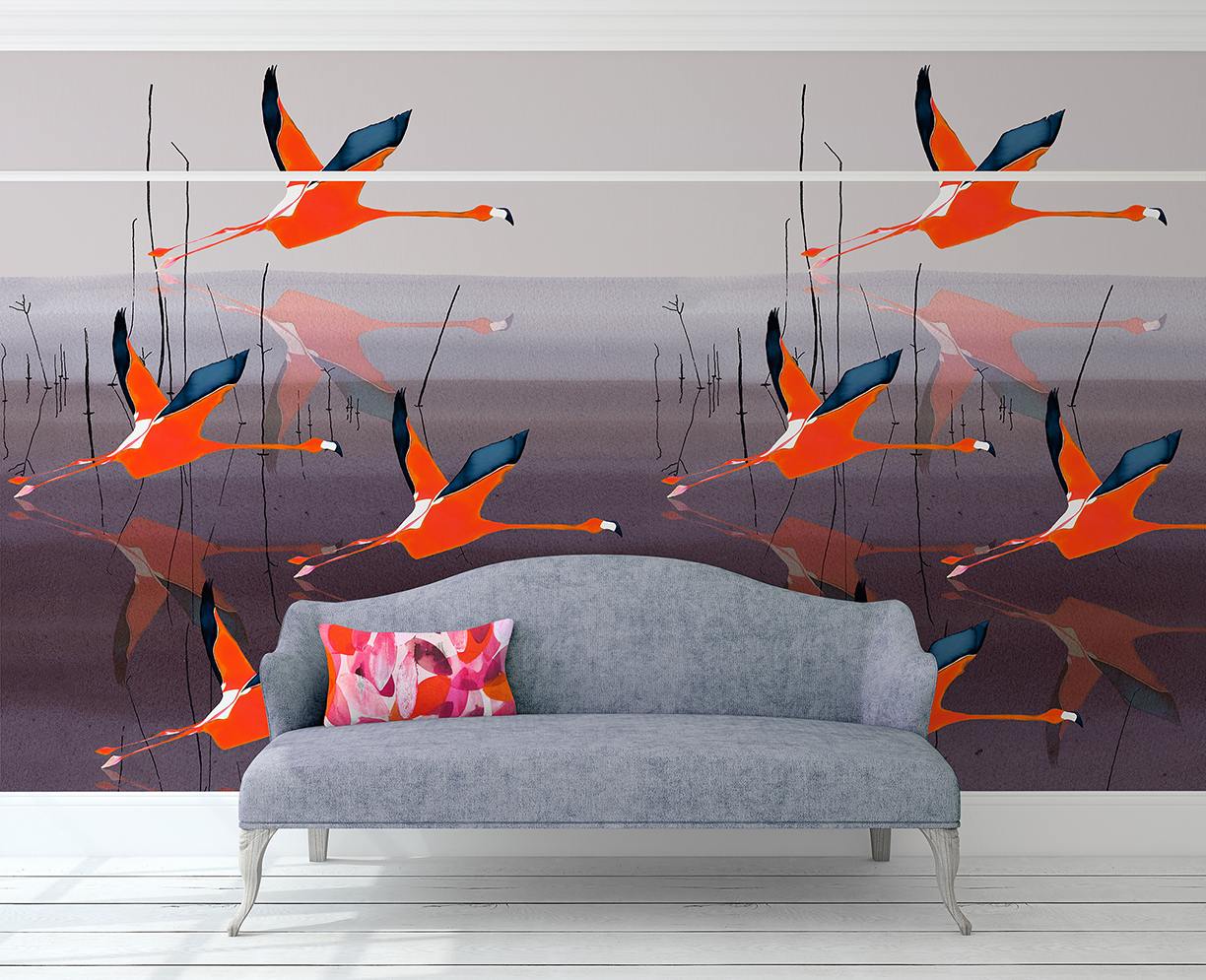
This striking mural wallpaper, designed by Anna Jacobs from her original painting in ink on watercolour paper, is imagined as a super large scale art work to give maximum impact in an interior. It can also be hung in repeat, used with picture rails and dado rails and cropped to fit most wall heights, without compromising the image.
Photo courtesy of Anna Jacobs
This grand Jungle Paradise Wallpaper by Santorus features ascending vines of imperial creatures amongst ferns and palms. A soft gold-metallic finish enhances the stunning imagery to set a scene of embellished colonial nostalgia.
Photo courtesy of Lime Lace
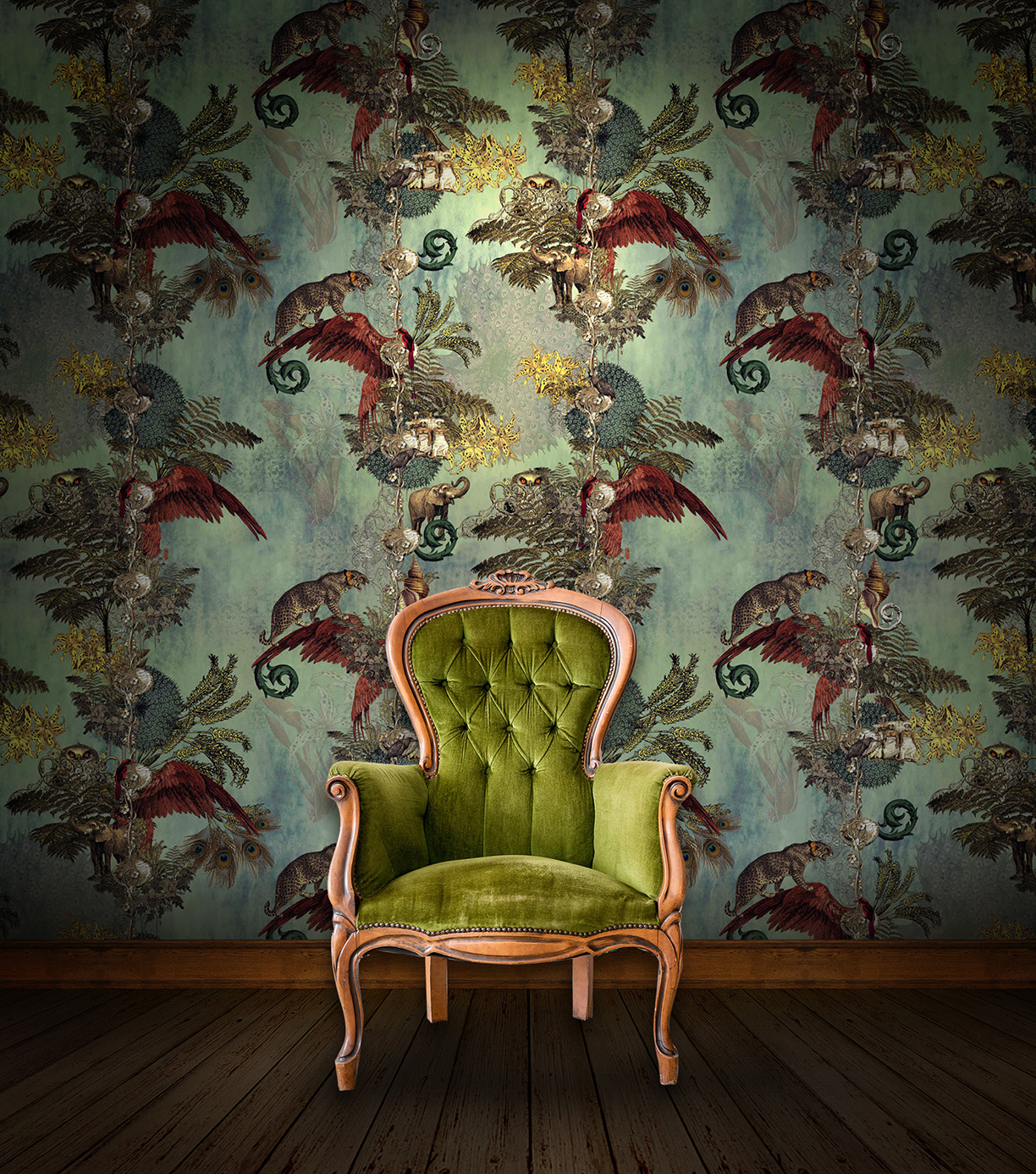
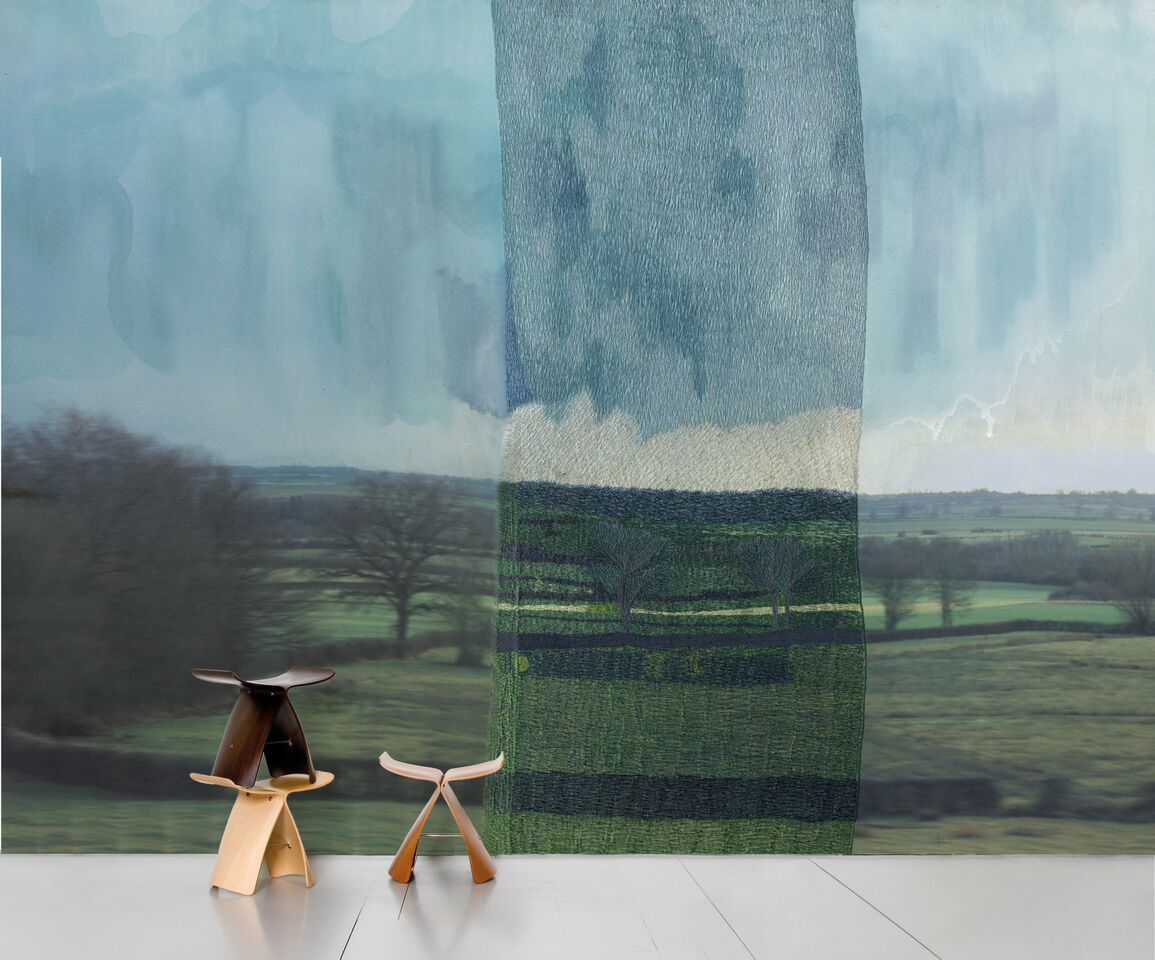
Designed by Aurélie Mathigot, this blue and green wallpaper displays a soothing design. The wallpaper is entitled “De L’autre Cote le Calme,” which translates to “The Other Side of Calm.” If you’re in search of escape, wide open spaces, and extensive greenery, this beautiful wallpaper will bring this breath of fresh air.
Photo courtesy of KSL LIVING
This paper creates a tromp l’oeil effect — appearing as three-dimensional images but on a flat surface. The designer sourced the images of old wood from surfaces in his own workshop in Eindhoven. This is a part of a new collection of six designs by Piet Hein Eek, black marble, white marble, black brick wall, silver brick wall, burnt wood and blue painted wooden floorboards.
Photo courtesy of Lagoon
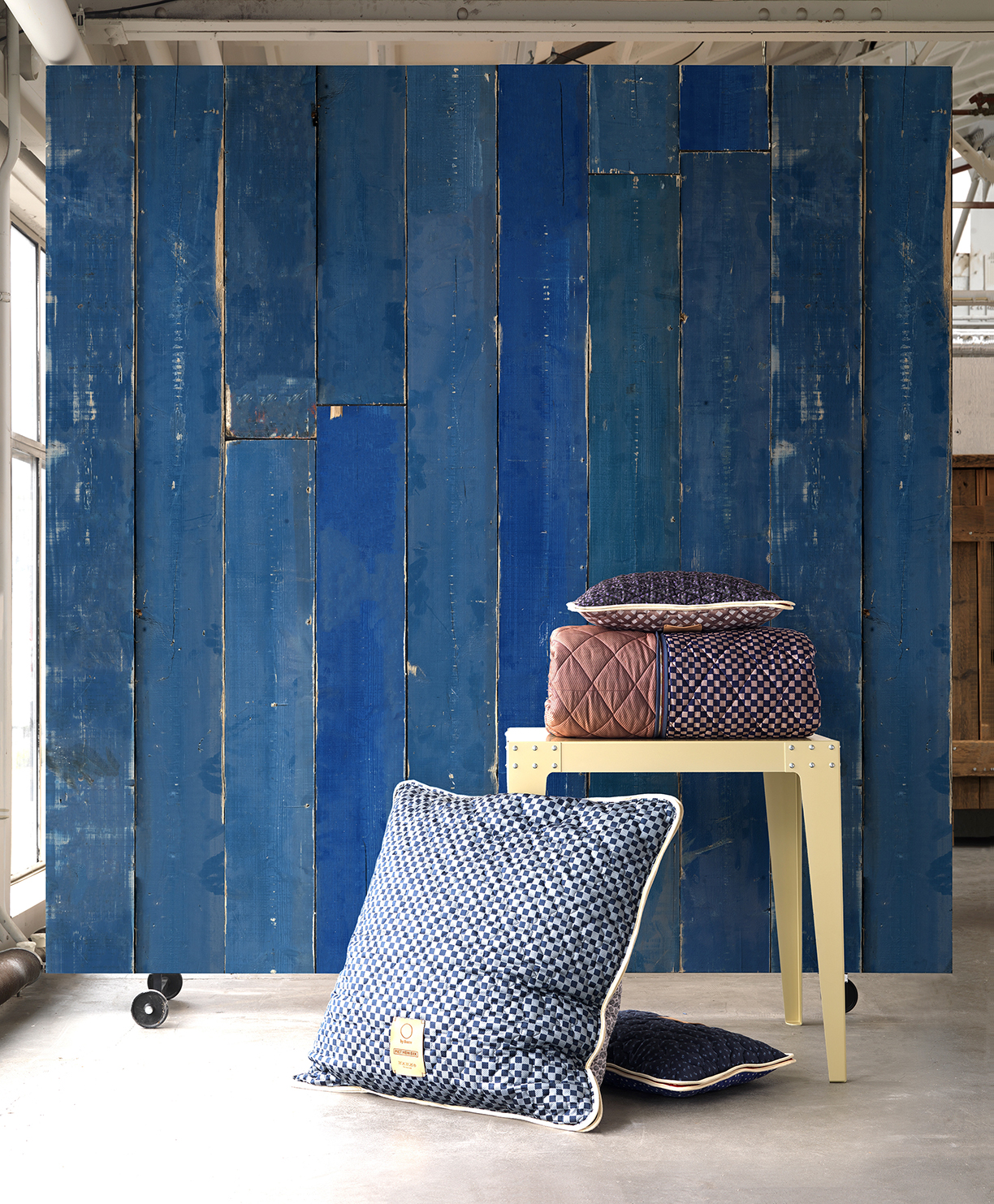
Fringe and tassels have recently made their way back into fashion, and this retro look is now making its way into our homes.
While the look may not be for everyone, the new version of fringing is definitely making waves in the interior design world in 2019. Whether it’s on lights, mirrors, or cushions, fringe can be a great way to add some fun and texture to sleek, minimalist spaces. Here are a few key ways to easily introduce the new fringing style to your home:
Pictured Right: Sevillian Sofa by Covet House
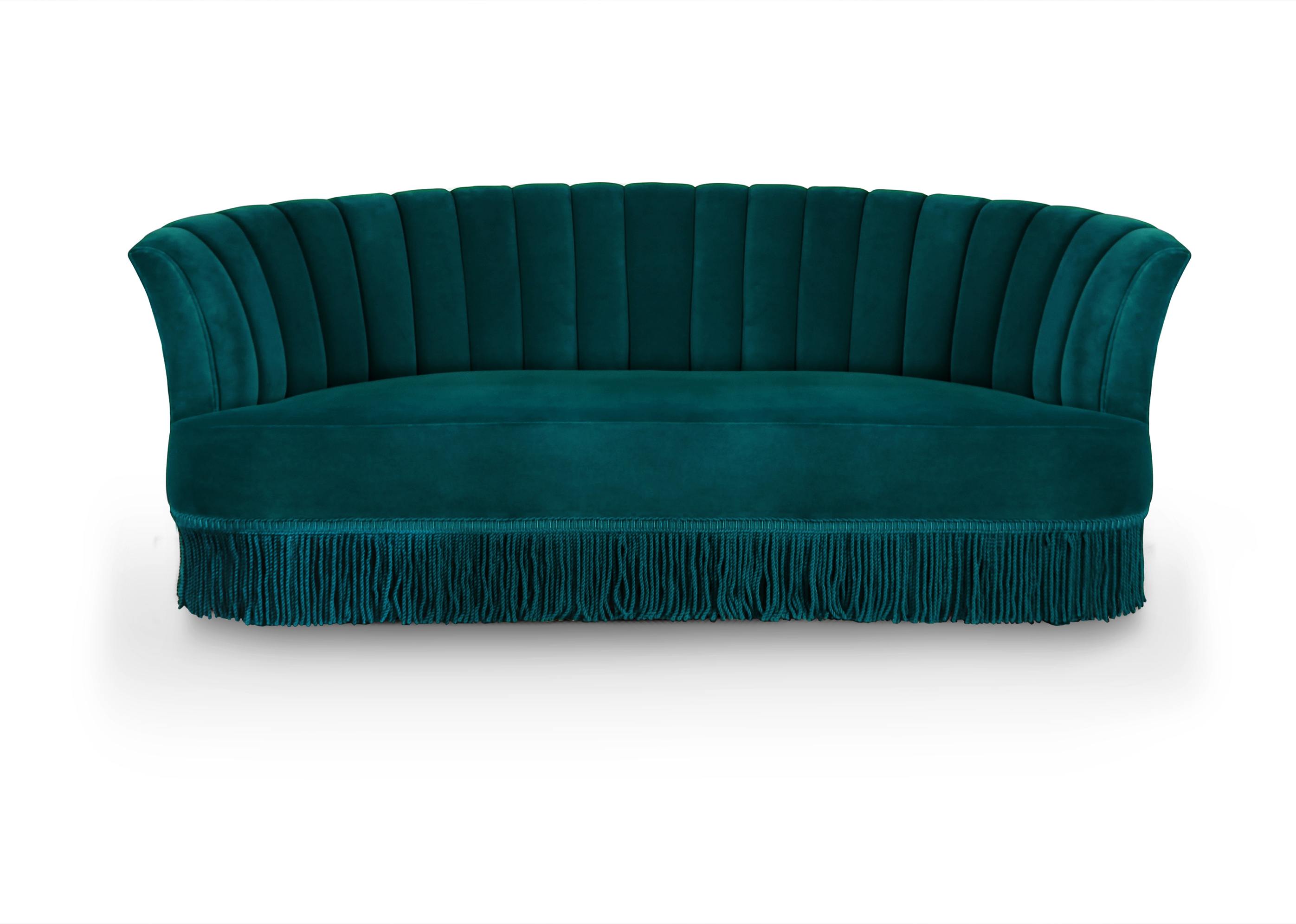
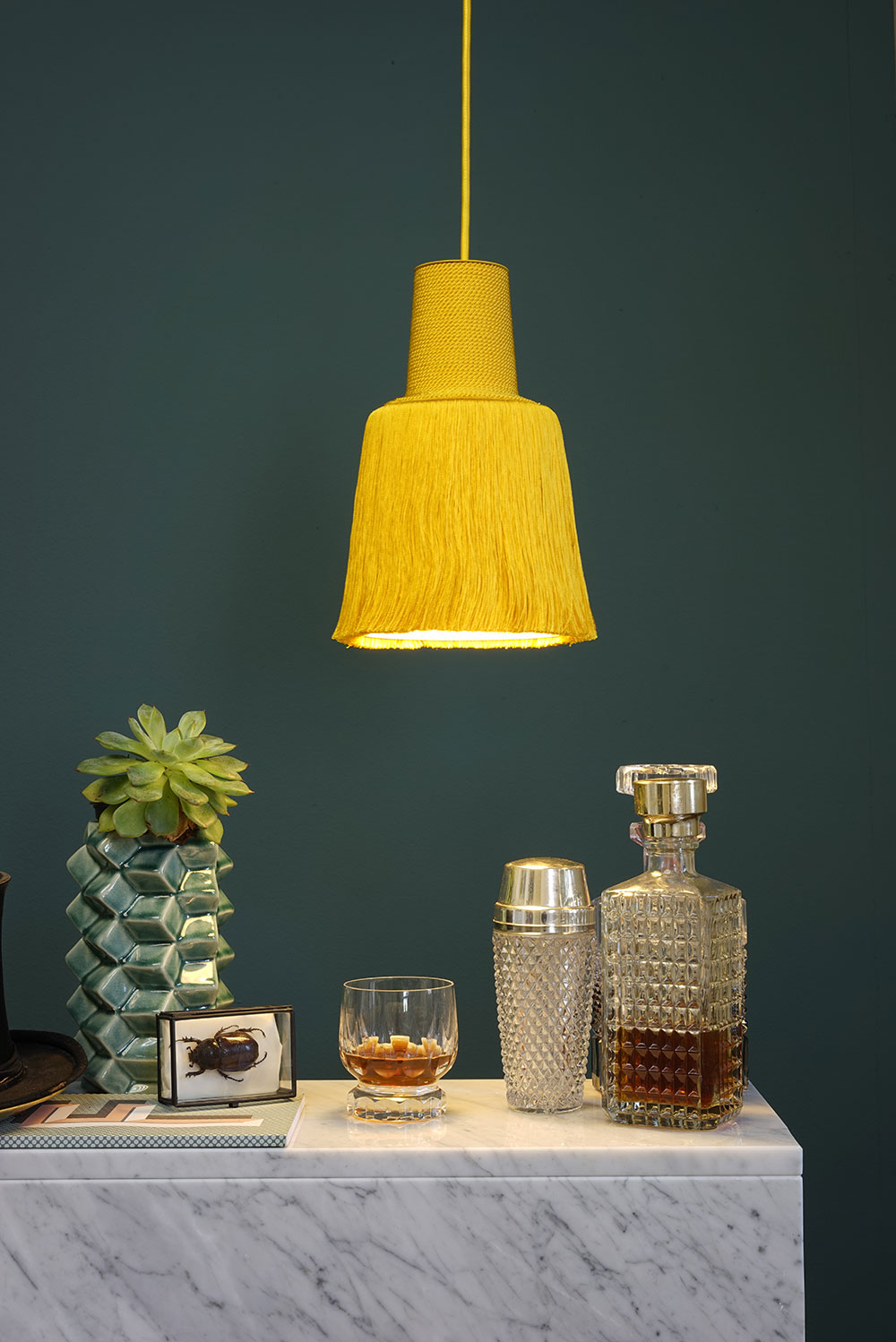
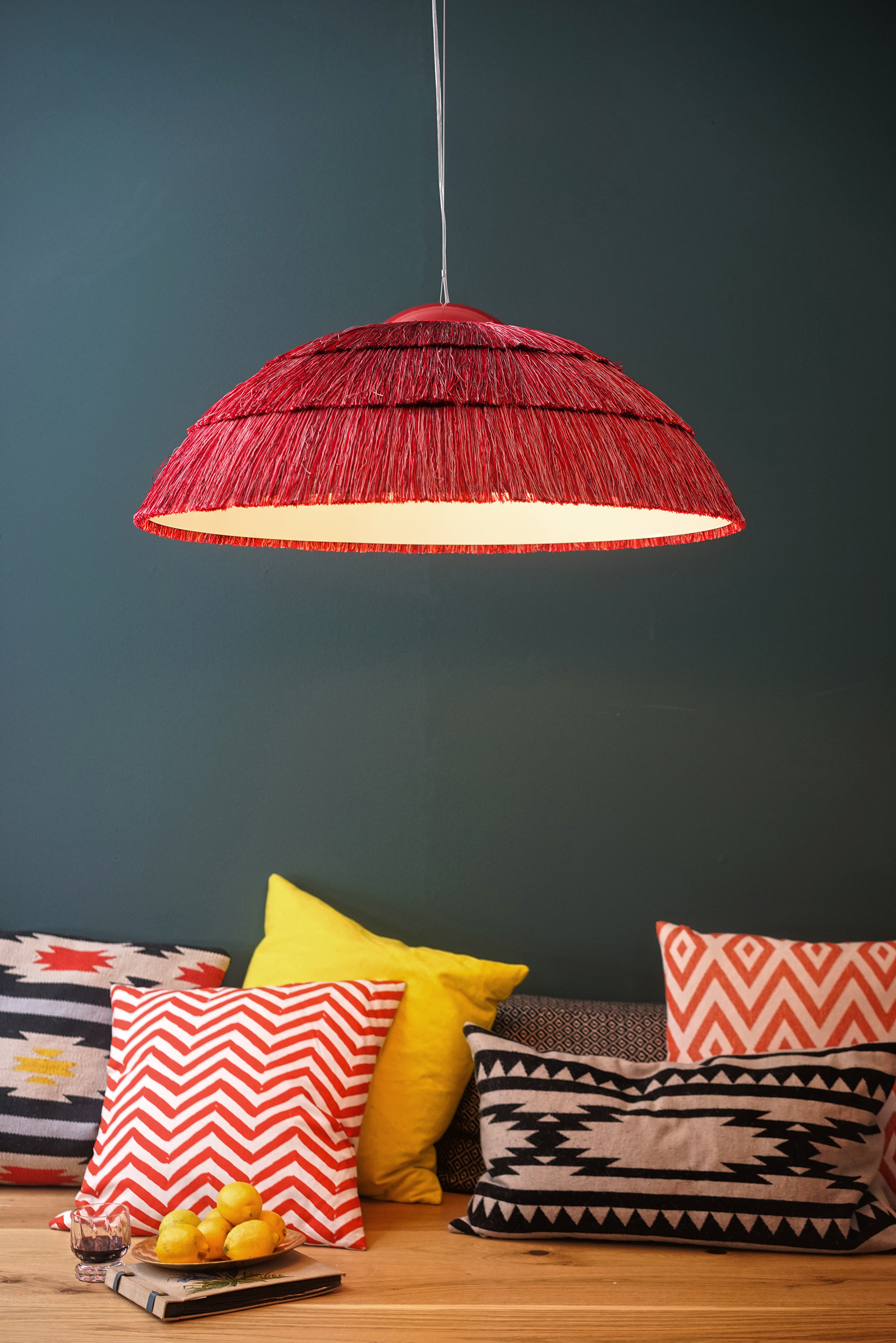
Lighting
Make a bold statement with fringed ceiling lights or even a fringed chandelier. For a more subtle look, a fringed lamp will add just the right amount of interest and texture to a gloomy corner of a room.
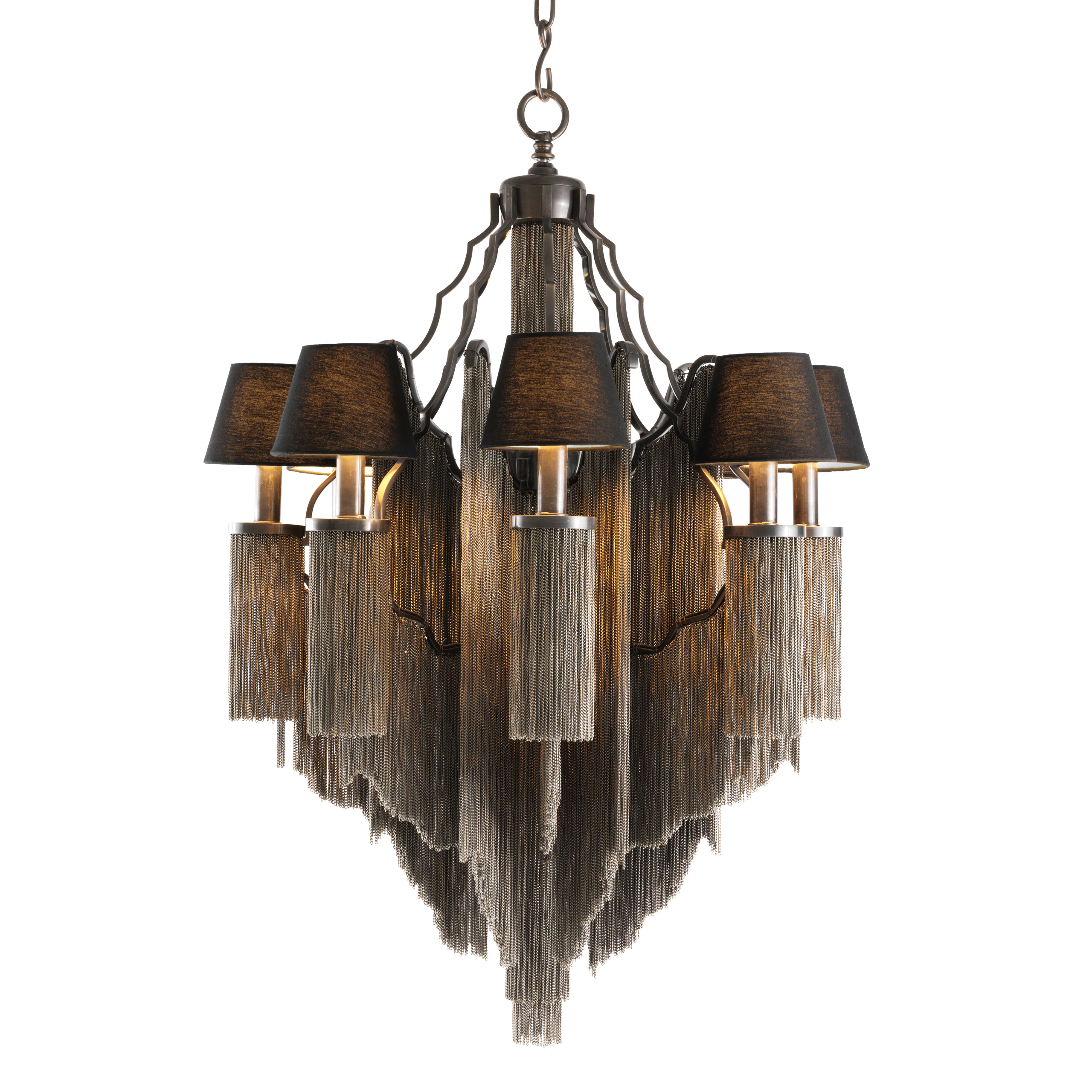
Furniture
Fringed furniture is definitely a more prominent retro look and will appeal to those who really want to embrace the trend and turn heads. Many furniture pieces can be ordered with a fringe added to the bottom such as sofas, footstools and chairs.
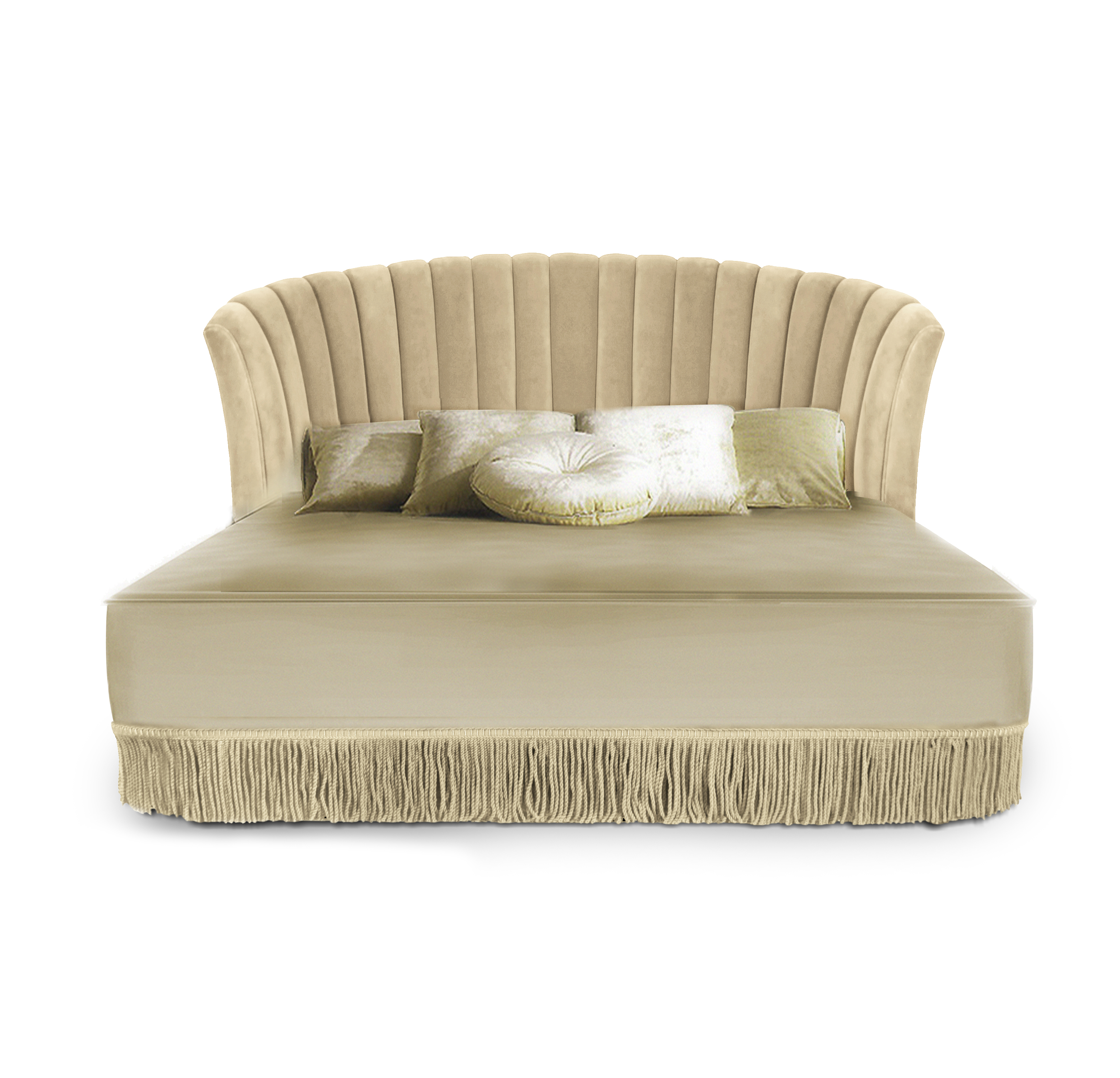
Sevilliana Bed by Covet House
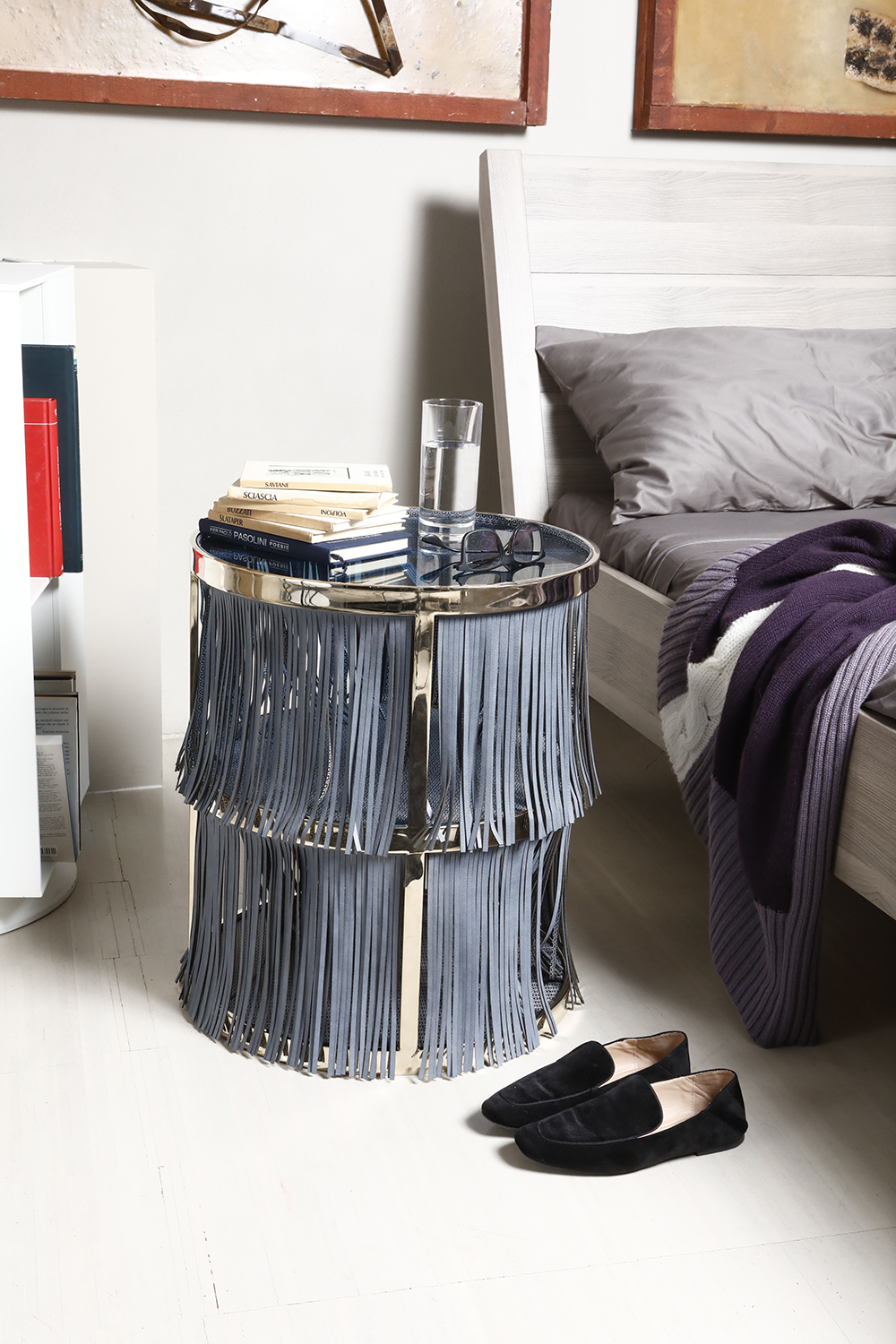
Clipper by Amerigo Milano
Accessories
If you’re not ready to fully embrace fringe in your home, a simple accent or accessory can be the perfect way to experiment with the trend. Blankets, duvet covers and wall hangings are a few easy ways to add this trend to your home.
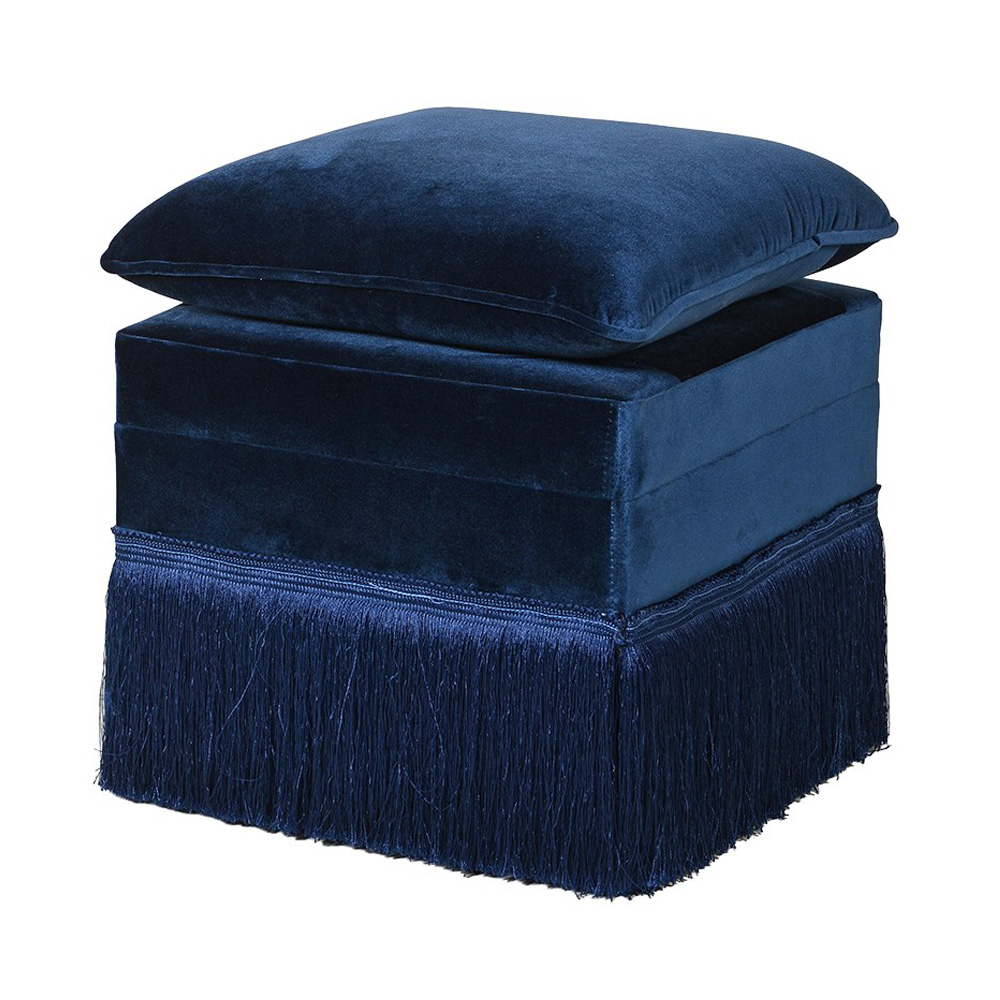
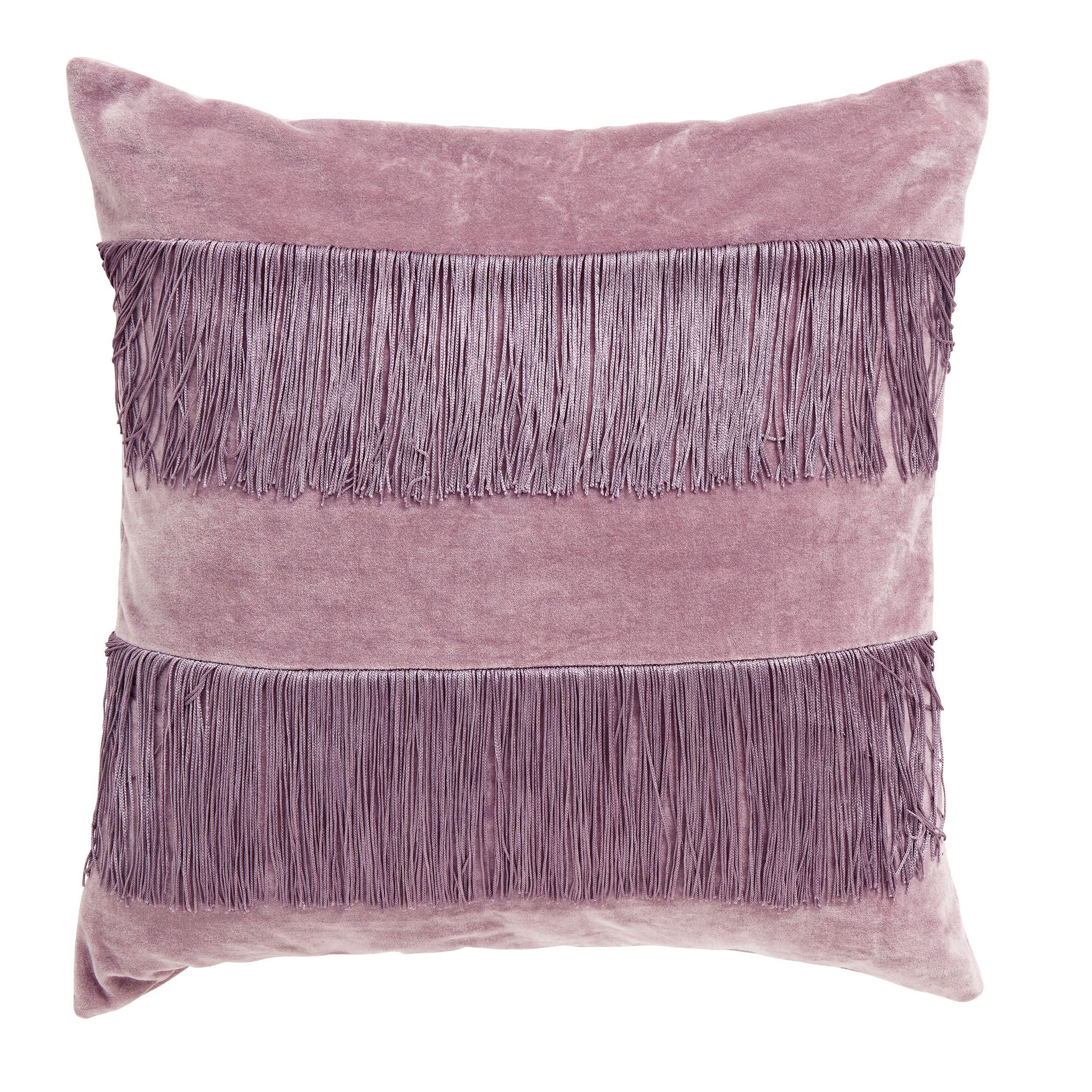
By AUDENZA
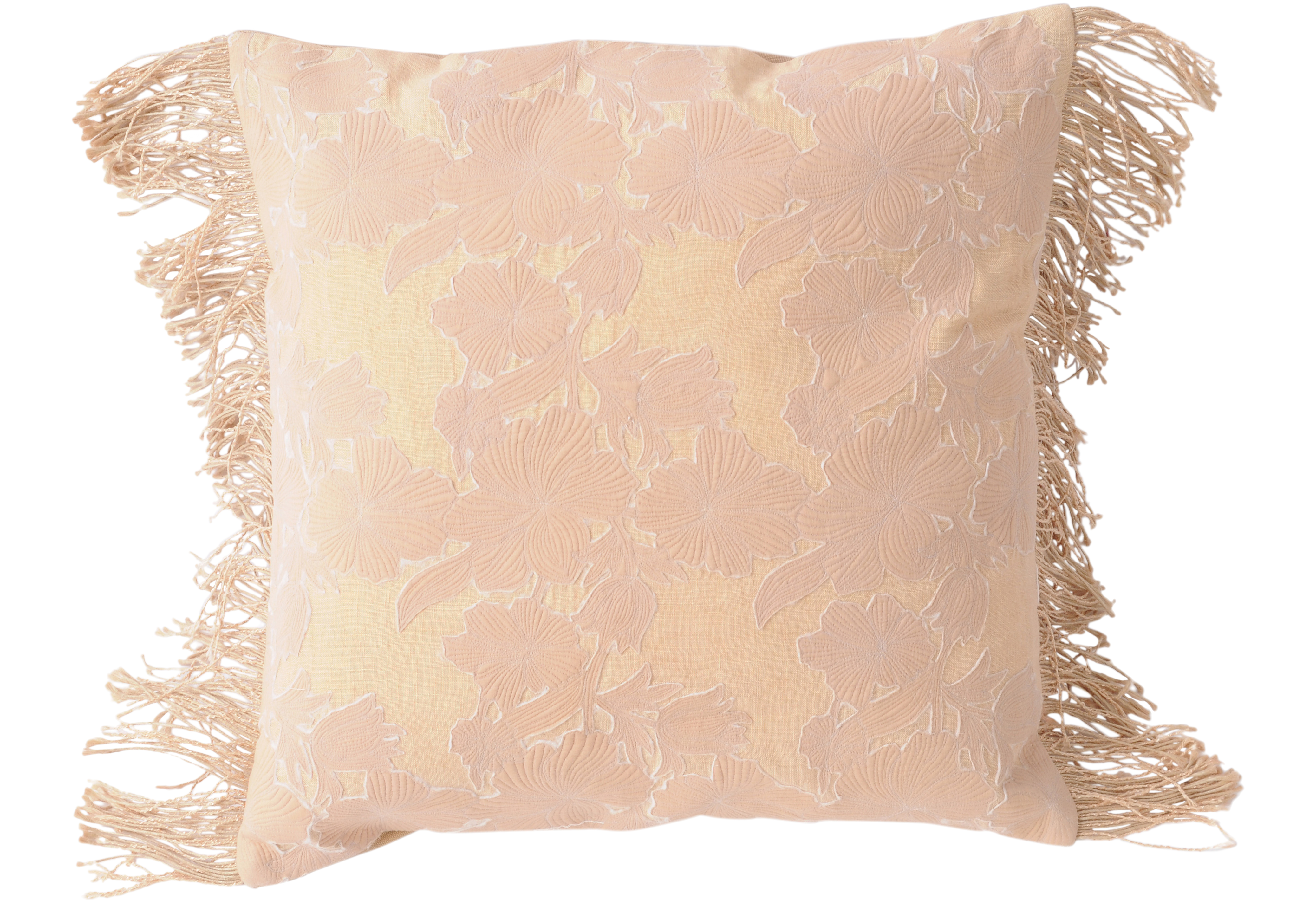
Pillows
Add a few cushions or pillows with a fringe to your space as a small introduction to the trend. Mix and match them with regular cushions. Fringes work well with a knitted texture and there are even sparkly and metallic options available.
The men and women of eastern Pennsylvania custom home builder Rotelle Studio(e) duked it out in the backyard in the ultimate battle of the sheds. The He vs. She Shed design competition was inspired by the growing popularity of tiny houses and the reimagined shed as the new backyard getaway.
“Outdoor space has been hot for some time; it’s a less expensive way to make your house larger. The shed component is an extension of that — giving you a unique getaway to spend time on hobbies or with friends,” says Peter Rotelle, president and owner of Rotelle Studio(e).
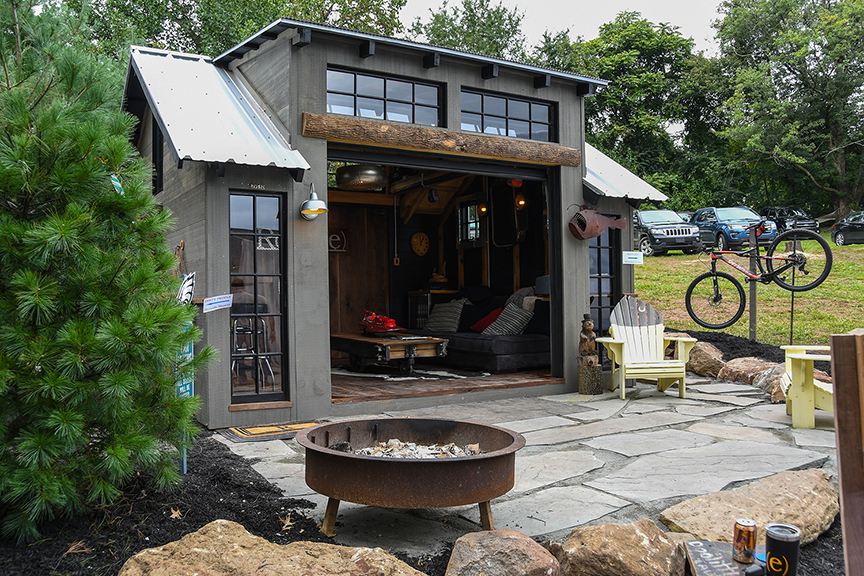
He Shed
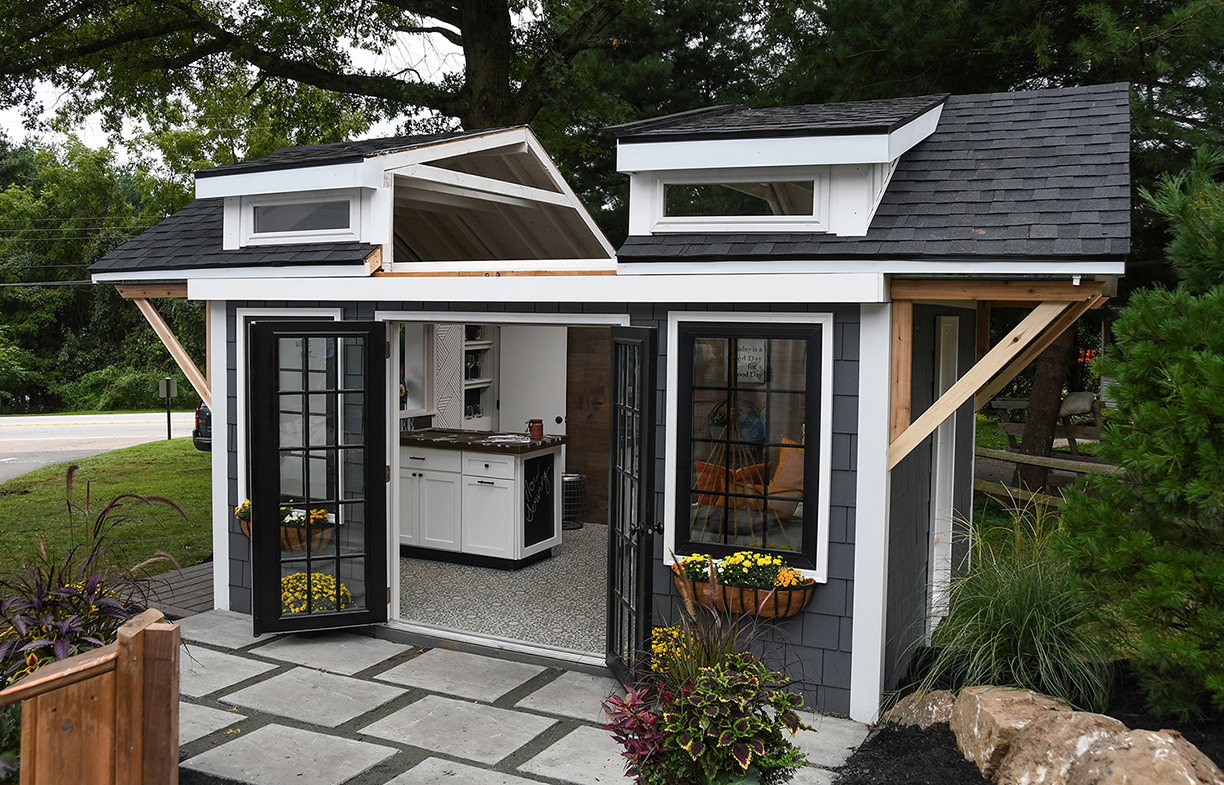
She Shed
He Shed
The competition not only showcased the custom company’s expertise and creative design talents, but proved to be a team building exercise that brought Rotelle staff closer together.
The He Shed team was led by Rotelle, who worked with Chief Operating Officer Anthony Holowsko, and Senior Project Manager Ken Zimmerman. Using raw lumber, the men constructed the ultimate backyard man cave. The team used repurposed antiques, including a wall lighting fixture made from car headlights and a coffee and bar station made from an old tool chest.
“What steals the show is the wall that drops like a tailgate and turns into a rear deck that has a grill that swings out adding an additional 100 square feet of living space. It’s simply spectacular to say the least,” Rotelle says.
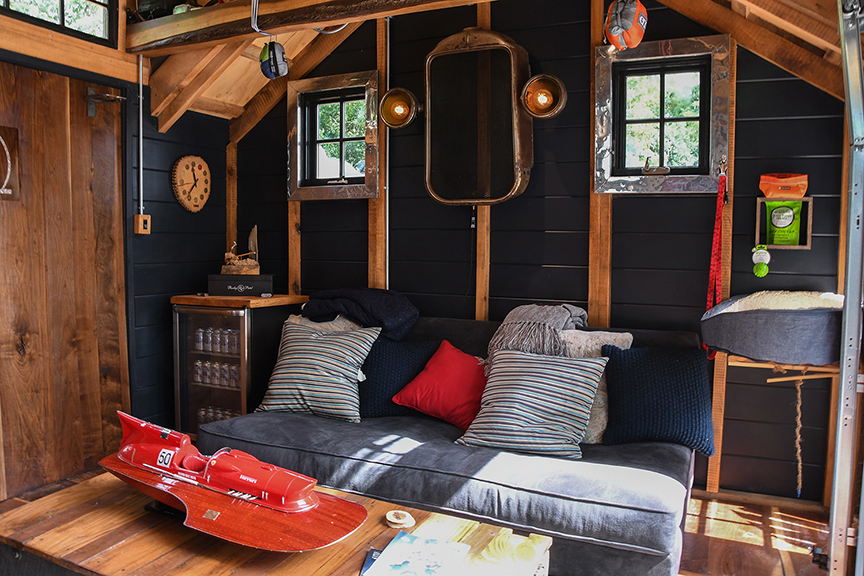
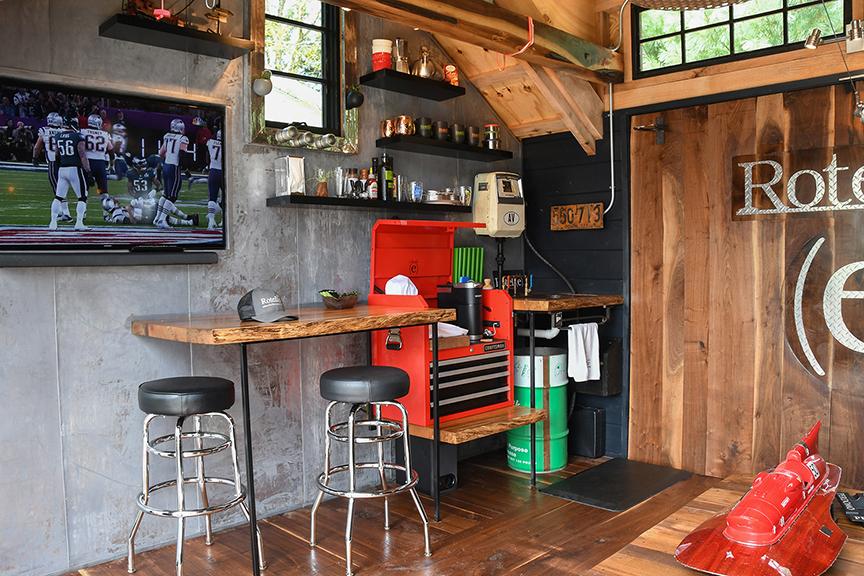
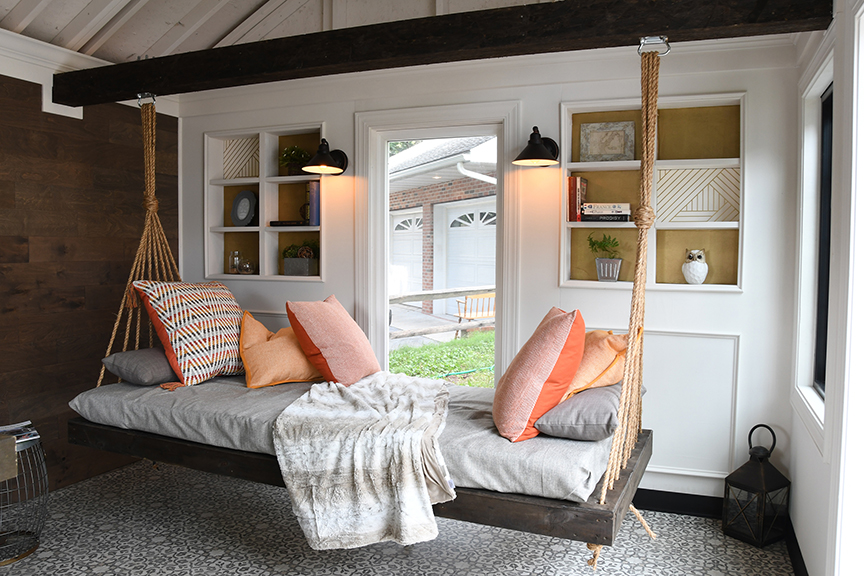
She Shed
The She Shed team was led by Chief Designer Renée Pratt, who worked with Chief Architect Heather Ryan, and Design Consultant Emily Wisler. The She Shed’s signature wow factor is a retractable roof that opens up to allow a lot of light and air into the chicly designed space, and when open provides cover over a side deck.
“The She Shed has the most outlandish feature of all, a roof that opens up to the sky with a garage door opener. It doesn’t get any cooler than that,” Rotelle says.
Clever built-ins allow for discreet wall storage, and the serving counter hides a cooler. Completing the She Shed is a hammock-like day bed suspended from a sturdy crossbeam.
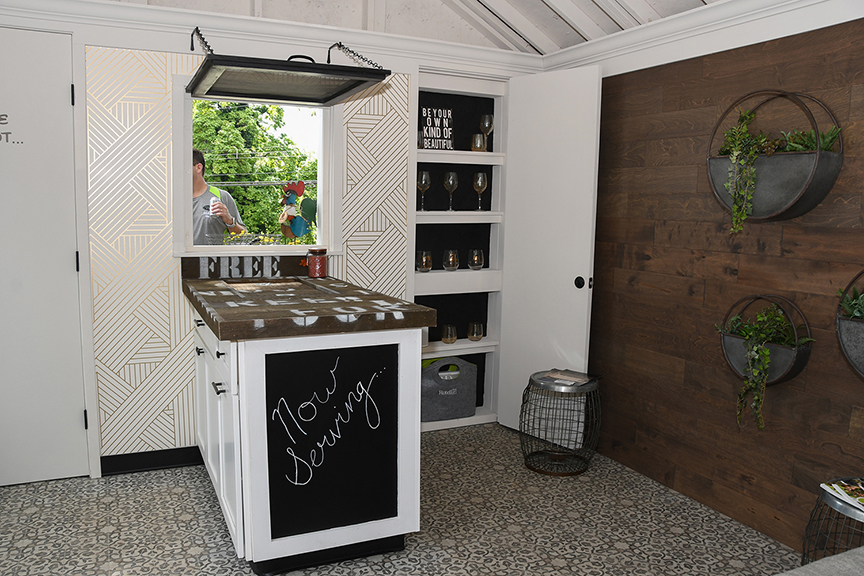
Both teams were challenged to create a space that feels stylish and luxurious, yet spacious and comfortable. “The most important design feature is trying to utilize all of the space and to make the space feel larger than it actually is,” says Rotelle, who understands the importance of creating outside living space, using a lot of windows and drawing inspiration from boats and planes.
“The tiny house craze is extremely appealing, however the reality of living in one is an entirely different story,” explains Rotelle. “They are very quaint, ship-shape and highly appointed but when it comes to 365-livability, it’s may not be practical for everyone. This competition was a demonstration of how on a limited basis, you can have a tiny house, shed or cottage and accomplish the intimacy of the units.”
Online voting ended on Oct. 7, and the She Shed won the competition by 182 votes. Voters were automatically entered into a raffle to win the She Shed. Realtor Meredith Jacks of Styer Real Estate in South Coventry, Pa. will take home the She Shed.
The He Shed fetched $11,011 in its online auction. The winning bid was placed by Rotelle, who will be installing the He Shed at his 45-acre campground Simply Rustic. The check was written to Ashley Addiction Treatment.
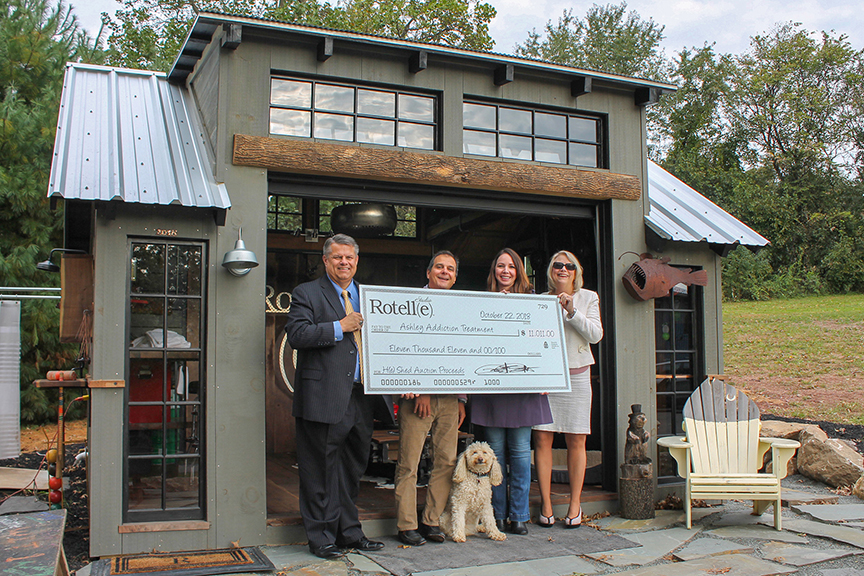
Photos courtesy of Rotelle Studio
By Brielle Bryan
Moved by the desire to tackle the notion that comfort does not require a sacrifice in style, Jaclyn Jones has produced a selection of shoes that appeal to women of all different foot sizes. Her newest collection is inspired by the sights and smells of flowers, and consists of “summer-friendly, playful, bold colors that are immediately mood-boosting.”
“I imagine our customers having the freedom of versatility while wearing pieces in our collection,” Jones said. “They’re ready for everything from outdoor weddings to happy hour to vacationing in the Hamptons.”
Jones sources the highest quality materials, including a custom 4mm thick foam insole, luxurious lamb lining and signature features.

“Our manufacturing takes place completely in Los Angeles, and we are proud to support U.S. workers and our local economy,” Jones said.
Jones saw the opportunity to create Jaclyn Jones USA, the first luxury women’s footwear brand handcrafted entirely in the U.S., after working in men’s shoes for years. Jones worked for Pinnacle Brand Group, a premium design house that designs, sources, markets and distributes fashion footwear and accessories, before she came to a pivotal revelation.
“After some market research, I found that the industry was vastly dominated by male designers/owners, and it clicked — all of these shoes were so uncomfortable because they were designed by someone who never had to wear them,” Jones said.
Following her realization that women needed someone who understood the perils and anguish of uncomfortable shoes to design their footwear, Jones began crafting her namesake brand in San Diego in October.
After successfully taking her experiences and producing shoes that provide both comfort and style, Jones’ empowering brand for women is now available for purchase on her website in half sizes from 6 to 11.
Posey in White Multi Foral
An excellent choice for workweek styling and your wedding season wardrobe, this pointed-toe shoe will be a real showstopper for any nice occasion. The Posey style features a hand-carved 4-inch solid wood heel and custom 4mm foam insoles, which offer comfort similar to wearing 2-inch heels! This style is crafted with ultra-soft lamb leather lining and white multi floral printed leather, which is exclusive to JJUSA. $1,375.
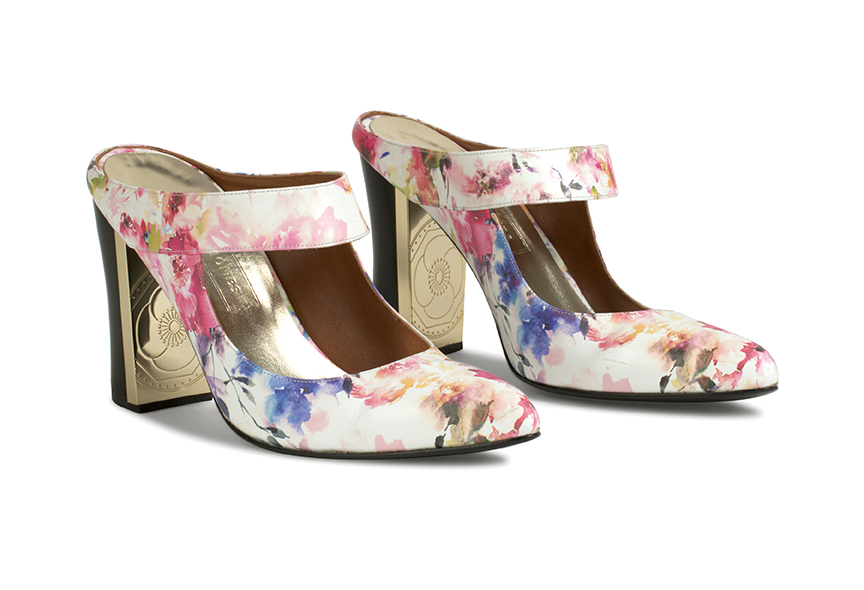
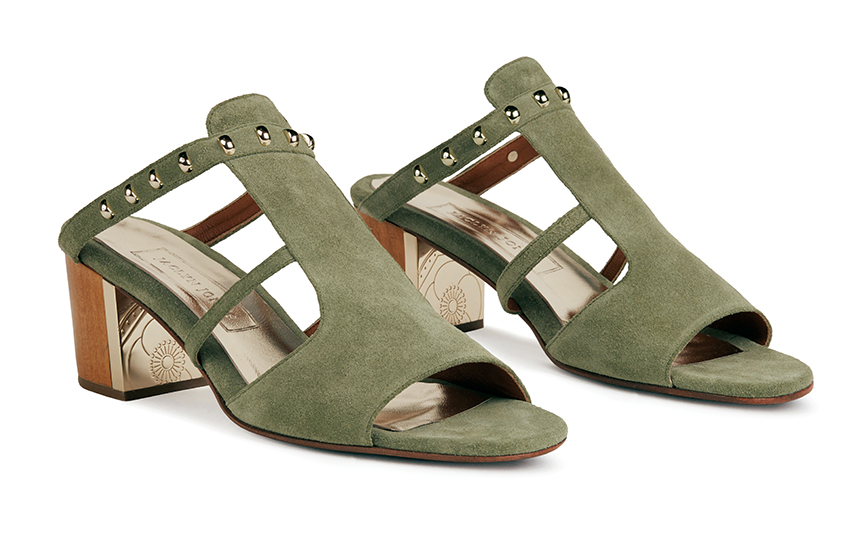
Clover in Sage
An adorable low-heel sandal crafted in versatile sage-colored suede, the Clover style features eye-catching gold studded accents. Built for walk-all-day comfort, this style features a hand-carved 2-inch solid wood heel and signature 4mm custom foam insoles. $1,095.
Water Lily in Gold
“Our easy-to-wear Water Lily sandals are the perfect vacation companions, featuring a pebbled gold leather upper, nude leather foot bed and fashionable strap with gold-studded accents,” Jones said. “The half-inch heel is built from stacked leather and the outsole features a rubber inset for added traction.” $850.
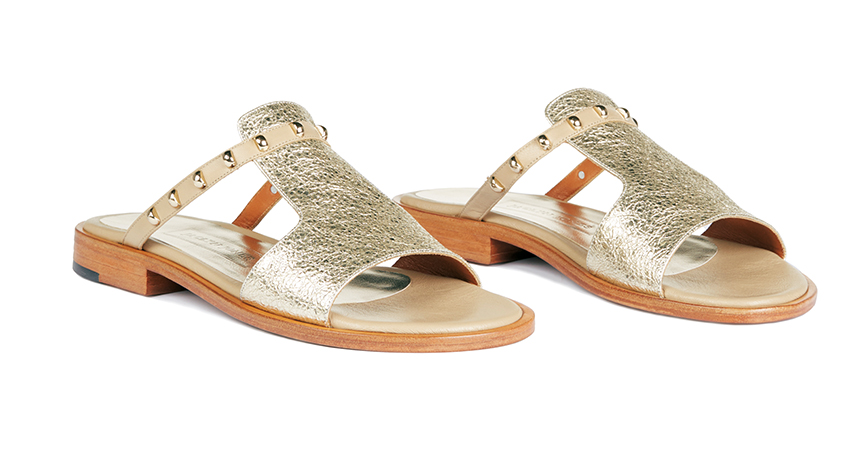
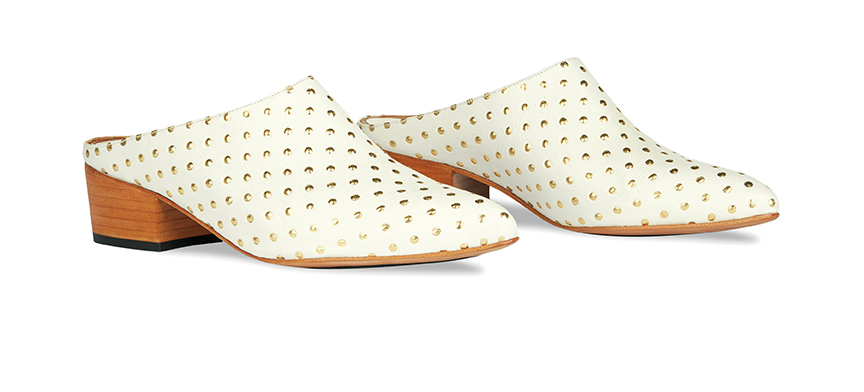
Calla Lily in White & Gold Dot
One of JJUSA’s most-loved styles of the season, Calla Lily is designed with a comfortable 1-inch stacked leather heel and an easy slip-on style. In addition to comfort, this chic pointed-toe shoe is made of premium lamb leather with a gold-dotted pattern, making this pair perfect for the seamless transition from the office to happy hour. $1,050.
Chrysanthemum in Tie-dye
This open-toe slide sandal is the epitome of summer design with its JJUSA-exclusive playful tie-dye print and logoed stud embellishments down the front of the shoe. The Chrysanthemum is crafted with premium lamb leather and a 2-inch hand-carved wood heel that features JJUSA’s signature heel plate and 4mm custom foam insoles for added comfort. $1,250.
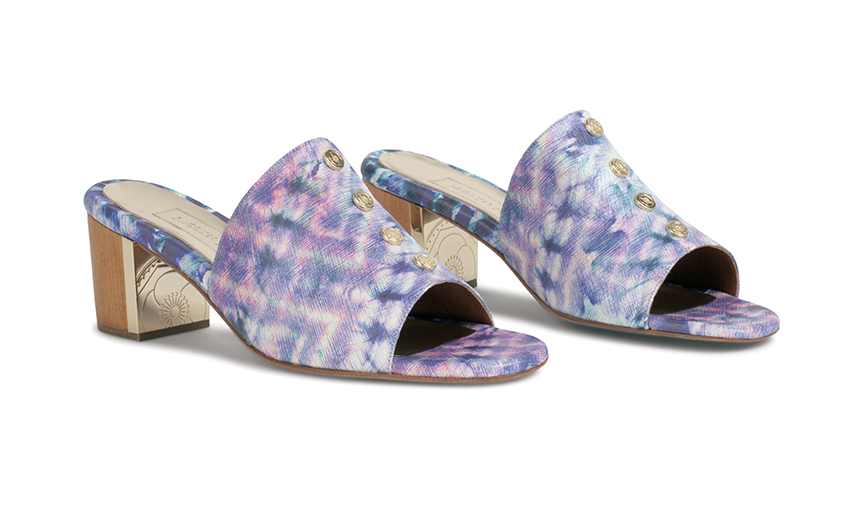
Photos courtesy of Jaclyn Jones USA
Using architecture and design as a vehicle for social justice, Emily Pilloton works alongside youth to co-design and build public architecture projects that transform communities.

The Furniture Society has announced Emily Pilloton as its keynote presenter for its annual conference, NEXUS. Pilloton’s lecture, “Fear Less. Build More,” will be presented on June 14 at 11 a.m.
The Furniture Society is a nonprofit, educational organization founded in 1996. Its mission is to advance the art of furniture-making by inspiring creativity and promoting excellence. The Furniture Society’s 2018 NEXUS conference will be hosted by Dogpatch Studios, an event venue in the Dogpatch area of San Francisco. The conference will take place on all three floors of the location, with separate presentations taking place simultaneously for the majority of the time. There are restaurants and cafes within walking distance from the venue, offering a variety of lunch and dinner options.
Pilloton is a designer, builder, educator and founder of the nonprofit Project H Design and its sister program, Girls Garage. Pilloton was chosen as a keynote speaker because of her nonprofit work. Pilloton’s work seeks to cultivate power in underestimated communities, specifically young girls, undocumented youth and communities of color.
Using architecture and design as a vehicle for social justice, Pilloton works alongside youth ages 9 to 18 to co-design and build public architecture projects that transform communities. She has built a farmer’s market with high school students, a playhouse for the daughters of abused mothers, a school library designed by its own middle school students and micro homes for a transitional housing agency.
Pilloton’s work is the subject of the documentary If You Build It, has been featured on the TED Stage, The New York Times and The Colbert Report, and has been awarded recognition by the Obama Administration’s Office of Science and Technology Policy, the SEED Design Award and the Curry Stone Design Prize.
Pilloton holds a Bachelor of Arts in Architecture from the University of California Berkeley, and has a Master of Fine Arts in Architecture, Interior Architecture and Designed Objects from the School of the Art Institute of Chicago. She is currently a Lecturer in the College of Environmental Design at the University of California Berkeley, and is the author of three books, Design Revolution: 100 Products that Empower People, Tell Them I Built This: Transforming Schools, Communities, and Lives With Design-Based Education and Girls Garage: A Fearless Builder Girl’s Guide to Tools (forthcoming, 2019).
Photo courtesy of The Furniture Society
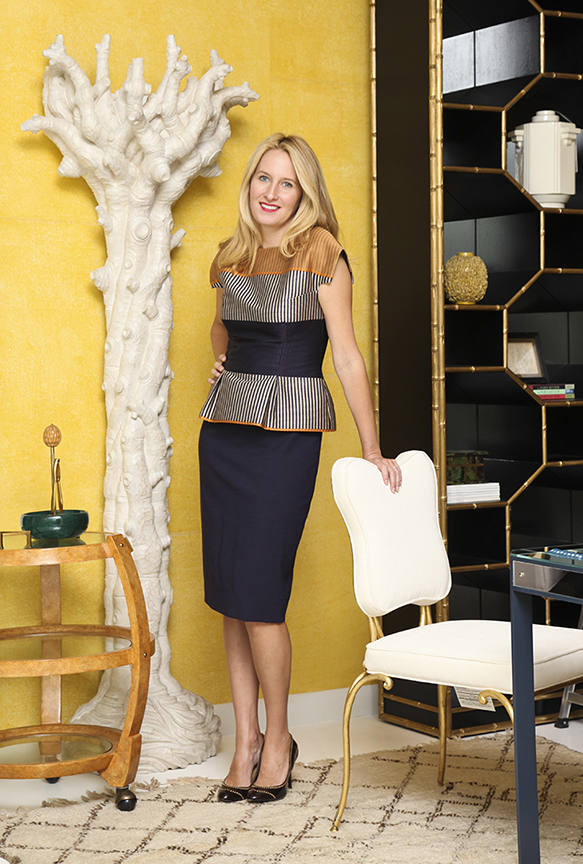
Arteriors, a leading provider of luxury lighting, occasional furniture and decorative accessories, is debuting its latest guest designer collaboration with interior designer Celerie Kemble. The collection recently launched online in advance of the April release at the Spring 2018 High Point Market.
“Celerie brings a different design vision to the Arteriors assortment with feminine, soft designs that bring a light and playful element to interior spaces,” says Mark Moussa, founder and creative director for Arteriors. “She has a special sense for shaping materials that, when combined with the skills of our factories, resulted in a truly exciting collection that we are thrilled to share with our customers.”
The Celerie Kemble for Arteriors collection features an assortment of wicker, rattan and bamboo pieces showcasing the natural materials that are signature to Kemble’s design aesthetic. “I designed this collection to be very tactile, with materials that pull from the natural and the handmade, where coastal informs the urbane,” says Kemble. “These pieces are meant to add levity and warmth to interiors — a touch of whimsy or flight of fancy, balanced with a modern edge.”
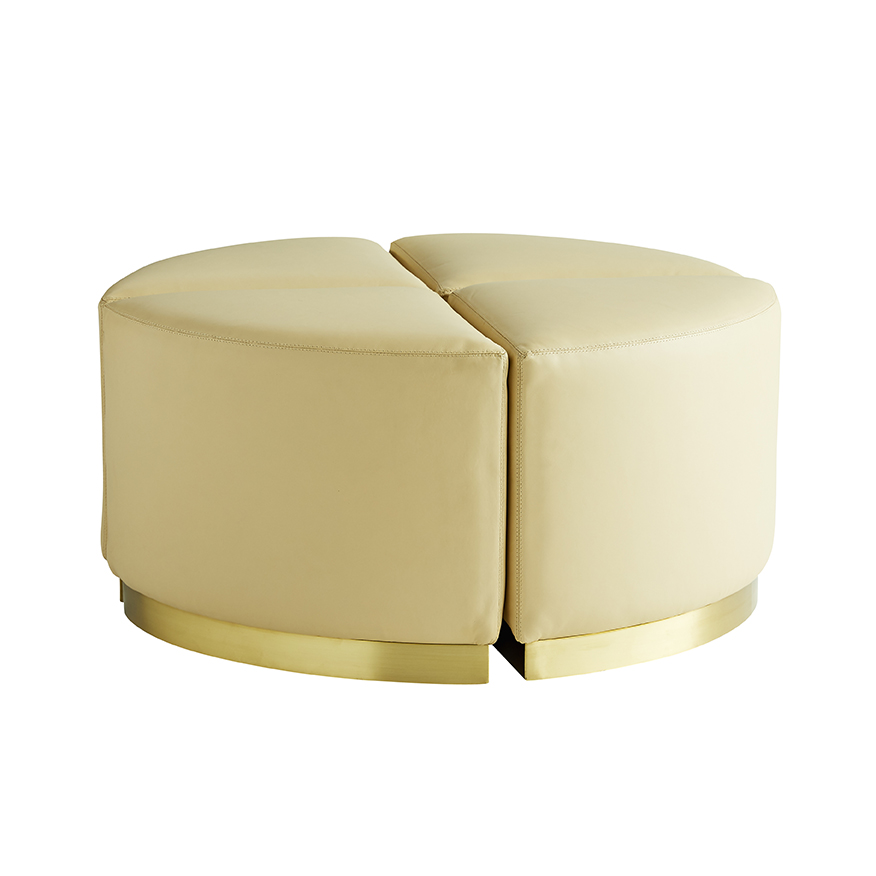
Ecru Ottomans, Set of 4
This neutral set of leather ottomans, offered at $5,670, can fit together to form one larger ottoman featuring a platform base plated with an antique brass finish.
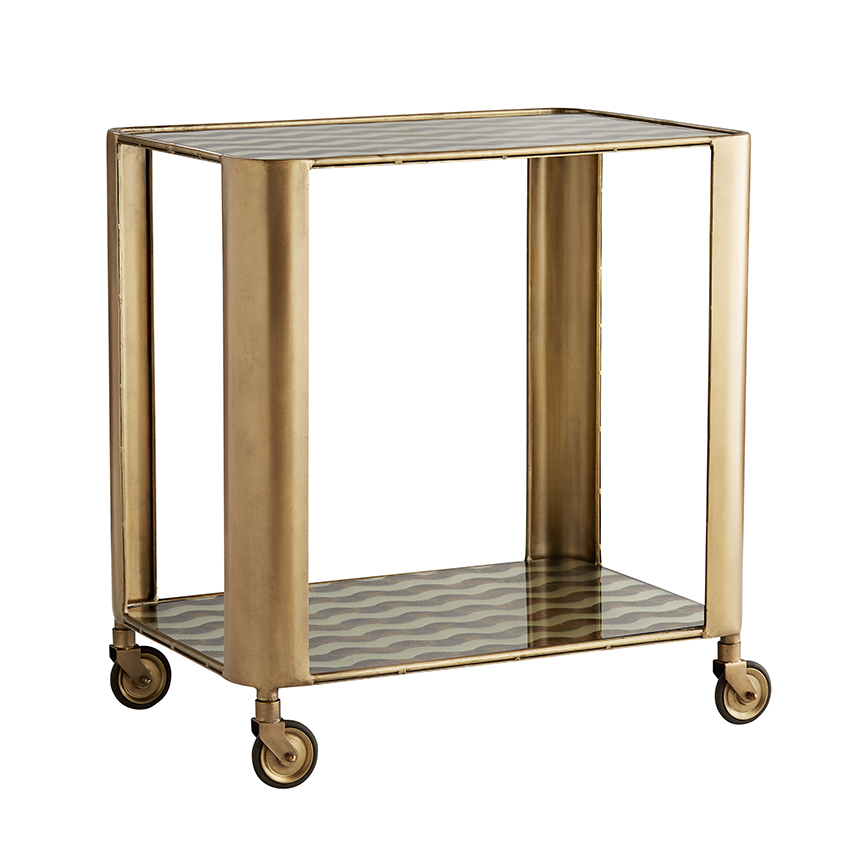
Tinsley Bar Cart
This sleek bar cart is crafted with a vintage brass finish, featuring two tiers plated with antiqued mirror glass with a whimsical pattern. The bar is footed with 360-degree swivel casters for mobility and available for $1,800.
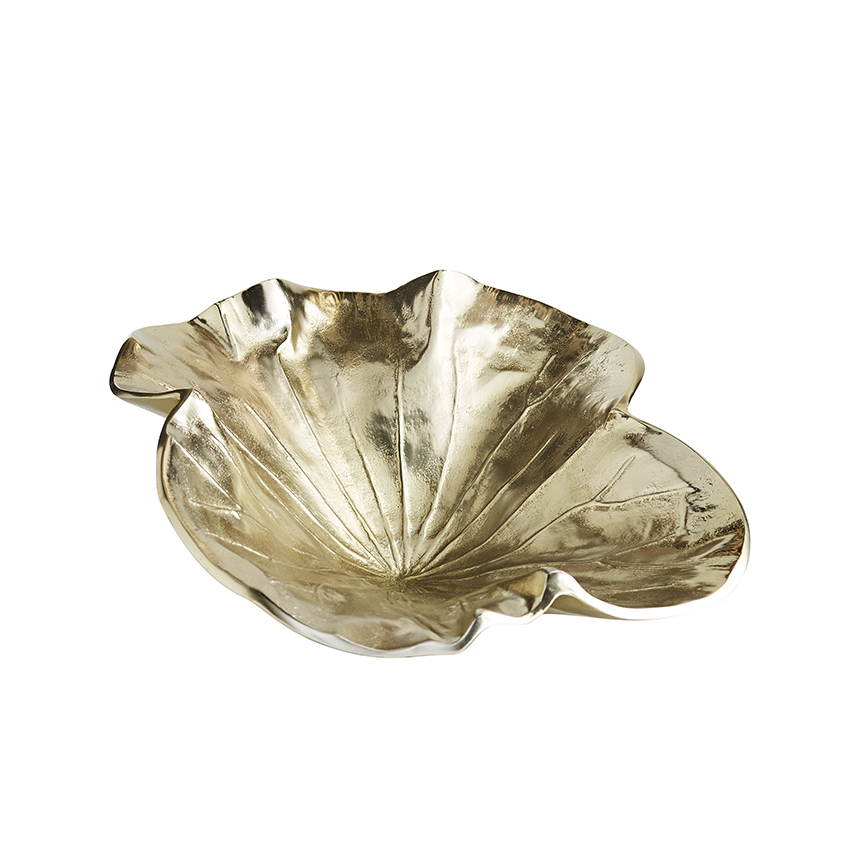
Waterlilly Sculpture
Rich in organic textures and lifelike details, this aluminum bowl has a polished brass finish to accentuate the intricate veining, leaf textures and natural curves. This piece, offered at $450, makes a great table accent or can be installed on the wall.
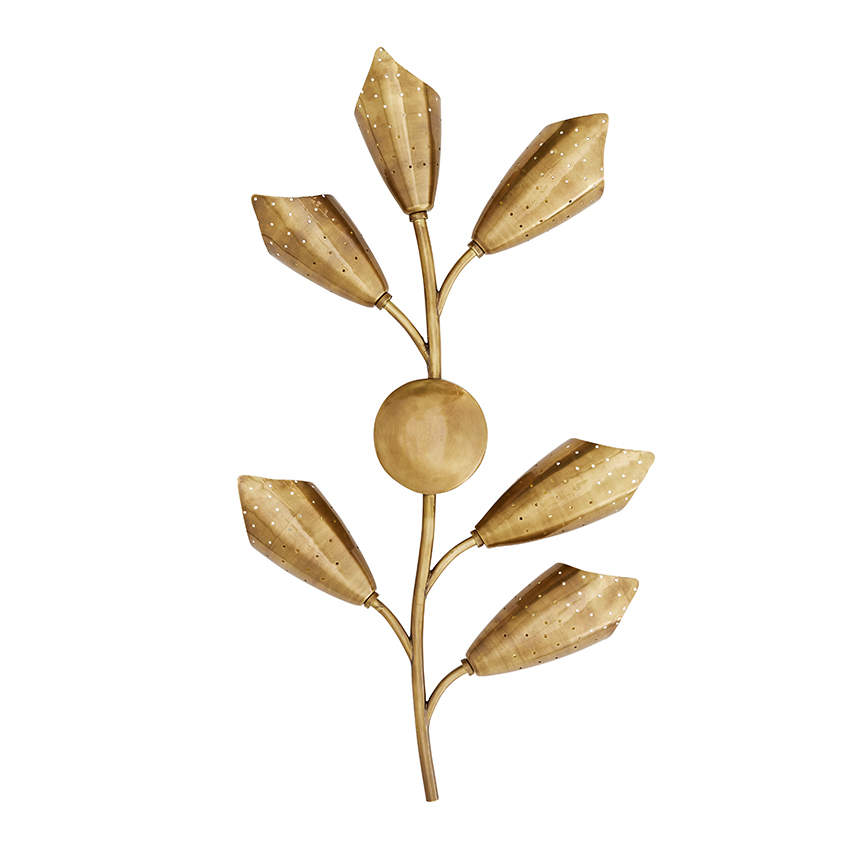
Calla Sconce
Made entirely from brass from stem to petal, this sconce is finished in a warm polish for added gloss and shine. Hand-punched details in the six lampshades cast dots of light around the room. At over two feet tall, this light is offered at $570.
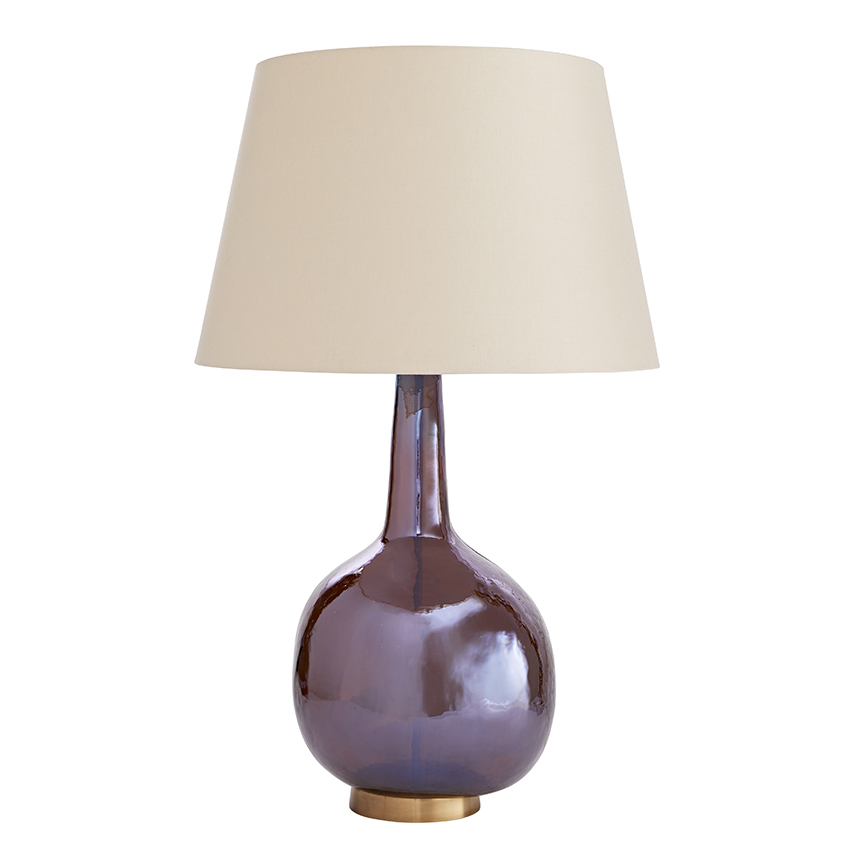
Mystic Lamp
Sultry, wine-colored glass is hand-blown to form this bottle-vase lamp. The iridescent, deep lavender hue casts a natural allure in this sleek and modern lamp, offered at $900.
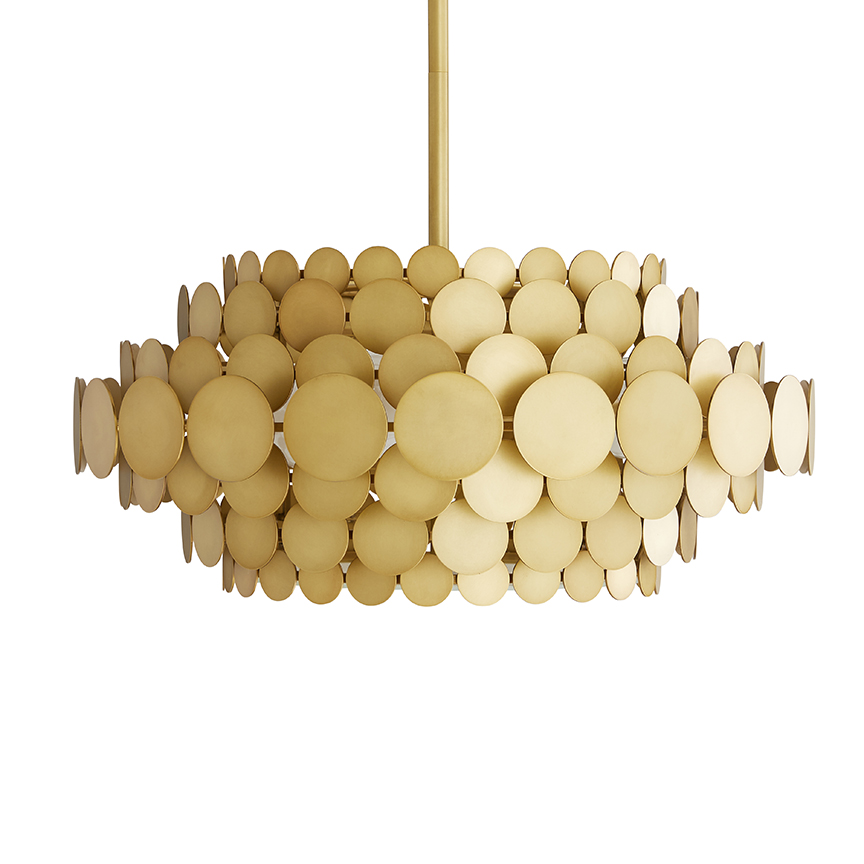
Calliope Chandelier
With over 150 stainless steel metal disks, this chandelier, available for $3,300, has an antique brass finish and a unique design. Three fittings hold standard-size bulbs, and a frosted acrylic plate beneath filters downcast light beautifully.
Photos courtesy Arteriors; headshot courtesy Josh Gaddy
Kettal’s outdoor decoration collection includes a wide variety of products, ranging from planters and fire pits to floor lamps and side tables.
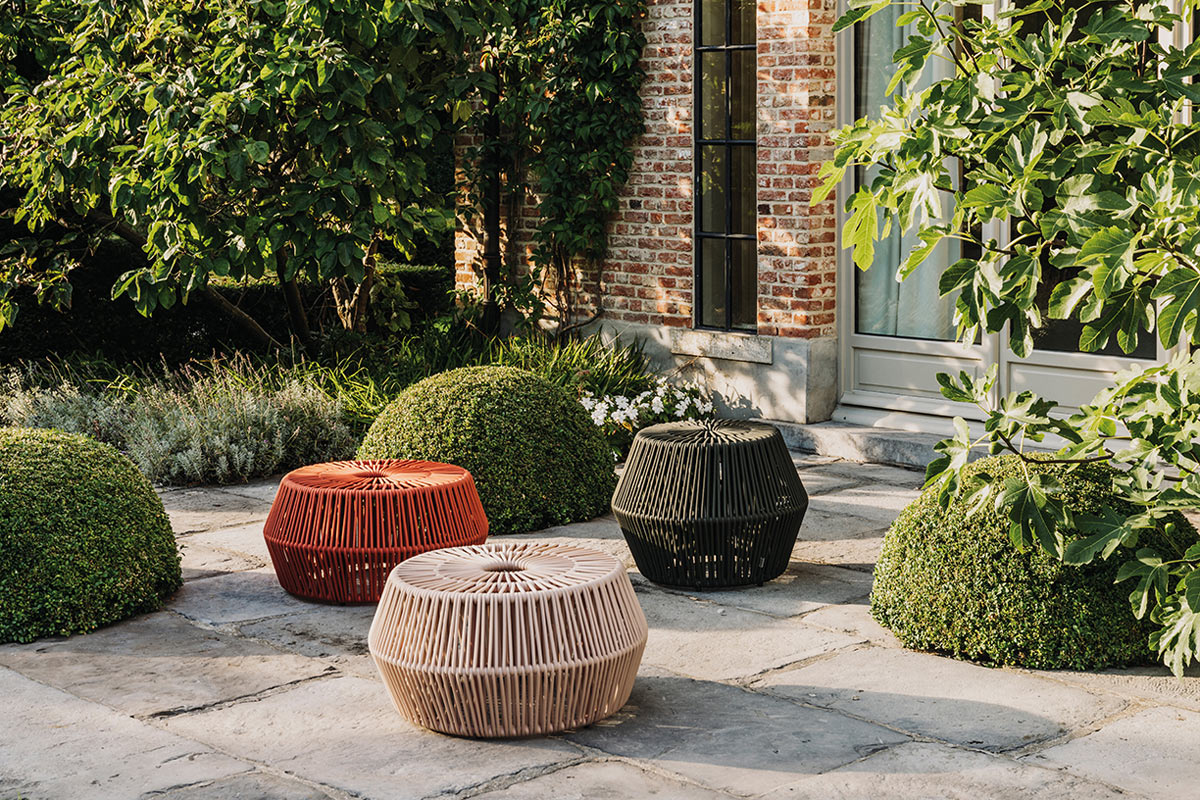

Kettal, a designer and manufacturer of timeless outdoor furnishings for home and commercial uses, has developed a range of exterior decoration and design products in its new puff design and rope collection, Kettal Objects.
Kettal Objects is a range of outdoor decoration products, which includes puffs, planters, fire pits and oil lamps designed by Emiliana Design Studio. Emiliana Design Studio was set up by Ana and Emili in Barcelona in 1996 after they graduated from London’s Central Saint Martins College of Art and Design. Their work is characterized by its ability to give each project a fresh conceptual approach, experimentation with materials and for proactively involving the user without compromising functional, technical or production aspects.
Kettal has extended its new collection with the introduction of a new puff, constructed of aluminum and one of the ‘Bela Ropes’ 17-color rope range designed by Doshi Levien. Doshi Levien is an internationally acclaimed design studio founded by designers Nipa Doshi and Jonathan Levien. The two designers have been working together for more than ten years in their London-based design studio.
The Kettal Objects collection also includes a sideboard, room divider, floor lamp, parasols, side table and tray by Kettal Studio, an oil lamp and fire pit by Emiliana Design Studio, candleholders and outdoor rugs (200 x 294 cm) by Patricia Urquiola, rugs (200 x 300 cm and 300 x 400 cm), terrain cushions and geometrics fabrics by Doshi Levien and three models of lamp — floor, table and battery-powered — by Michel Charlot.
Photos courtesy of Kettal
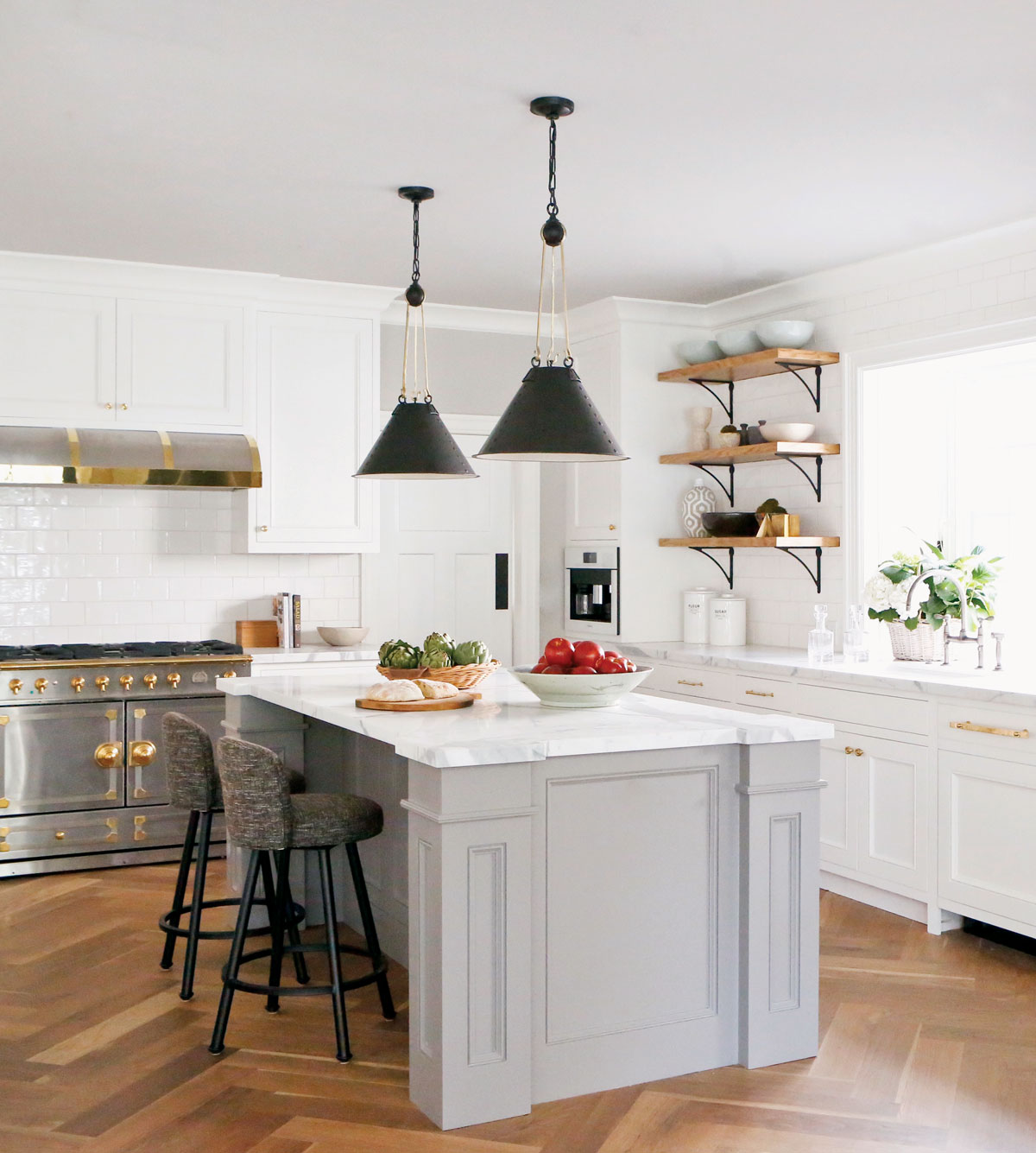
Updated traditional kitchen with herringbone floors, brass accents and a La Cornue range in Beverly Hills. Photo courtesy Lou Trapp.
The allure of interior design was not always at the forefront of Lindsay Chambers’ mind.
By Kristen Ordonez
Growing up in Palo Alto, California, she had ambitions of being a history college professor, pursuing a PhD at Stanford University. But while attending, something happened that would ultimately change her career path.
“One day, I got a knock on the door from a couple who worked at Google asking to buy my house. I didn’t have anywhere to move, but I realized I had an idea of what people wanted design and home-wise in Palo Alto,” shares Chambers. With this idea in mind, she bought a nearby home, gutted it out and updated everything in the home, even adding a basement.
That home was just the start. Enthralled in the process so much, Chambers then finished getting her masters degree and became a full-time custom home developer, founding Hazel.Wood Design Group. “The custom homes sold so quickly, and people were asking me to design their home like my houses,” says Chambers.
It did not take long for her to realize her strengths and love for interior design. Hazel.Wood was renamed Lindsay Chambers Designs in 2015, and rearranged its focus to both home and interior design. Now, along with home development, Lindsay Chambers specializes in interior designing with a focus in the transitional style of mixing contemporary trends with classic pieces, and vice versa. Much of her work is inspired by her surroundings, particularly the modern styles of Los Angeles and the “Old is New” aesthetic of San Francisco, blending together effortlessly to create what she coins “understated elegance.”

“I prefer clean lines, and a highly edited aesthetic,” Chambers notes. “I prefer to work with materials, textiles, and furnishings that are of a high quality but are also understated.”
When it comes to the business side of running her firm, Chambers has found that her clients tend to understand the simple yet sophisticated elegance she loves to incorporate. “Most of my clients are on the younger side,” Chambers analyzes. “They like the traditional aesthetic, but they want something cleaner, younger, hipper — but not in the cold modern genre. That is why I think the transitional style has become so popular.”
“A room in someone’s home should not feel like a museum. It needs to be a place that is beautiful as it is warm and welcoming,” she says.
Accommodating the client while also catering to her own likes and tastes is almost as easy as breathing for Chambers, whose choices in textures, fabrics, colors and pieces marry well in a style that is supposed to be a union of different eras and their corresponding aesthetics. And like any true designer, she knows how to bring a balance of both her vision and the interests of the client without the space feeling disjointed or cold. “A room in someone’s home should not feel like a museum. It needs to be a place that is as beautiful as it is warm and welcoming,” she says.
Chambers’ favorite spaces to design are kitchens and master bathrooms because of the freedom open spaces like these provide. “I love to work on both because, as the designer, you are often creating your own design from scratch and get to influence the interior architecture as well as the finishes. Whereas in other rooms, you are taking other people’s art, whether it be a sofa or table design for instance, and harmoniously putting them together.
Since her firm launched, Chambers has designed multiple homes in California and received well-deserved recognition. Her favorite project so far is the Hollywood Hills home in Los Angeles she is currently designing — for herself. “It is so exciting to try out new products and finishes that I have never gotten to work with before but have always wanted to,” she says. She has also come to find her love for art transform with every addition made into an ever-growing art collection, one she swears to never sell. “When I move into a new place, I can’t get comfortable until the art is up on the walls.”
Committing to designing a home for oneself has proven to have its highs and lows, according to Chambers, but ultimately she is loving the challenge of fitting into the shoes of a client. Her only complaint about the project so far has been over her own self-instituted standards. “I’m a perfectionist and since it’s my own house, everything has to be perfect.”
If reimagining the space for her own home was not exciting enough, Chambers is also taking opportunities to handcraft her own materials.
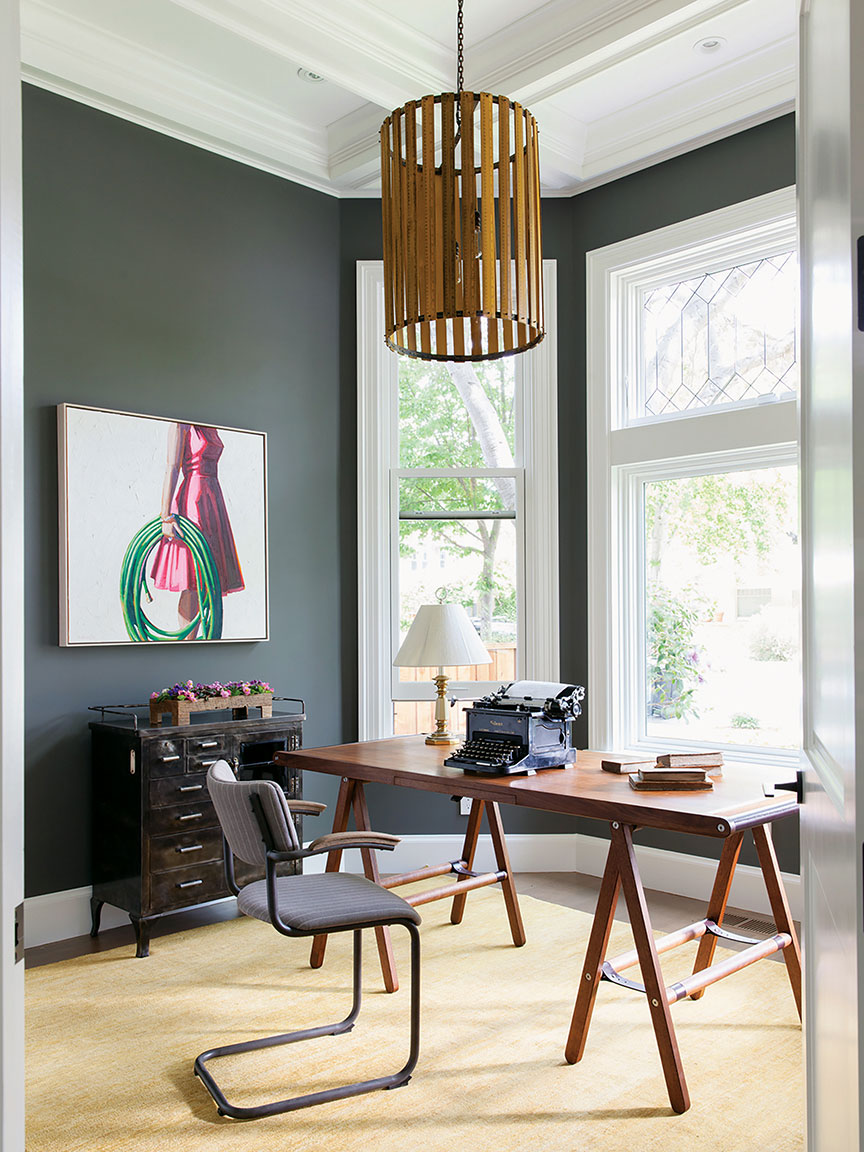
Photo courtesy Christopher Stork.
“I designed my own cabinet hardware, which is being manufactured by Waterworks, for instance. I’m also importing some bespoke light fixtures from France.” These practices have fortunately not stopped just with her home. In the past, Chambers has designed her own line of fabrics with Guildery, but these achievements have reached a whole new level, as she is planning on launching her own furniture line.
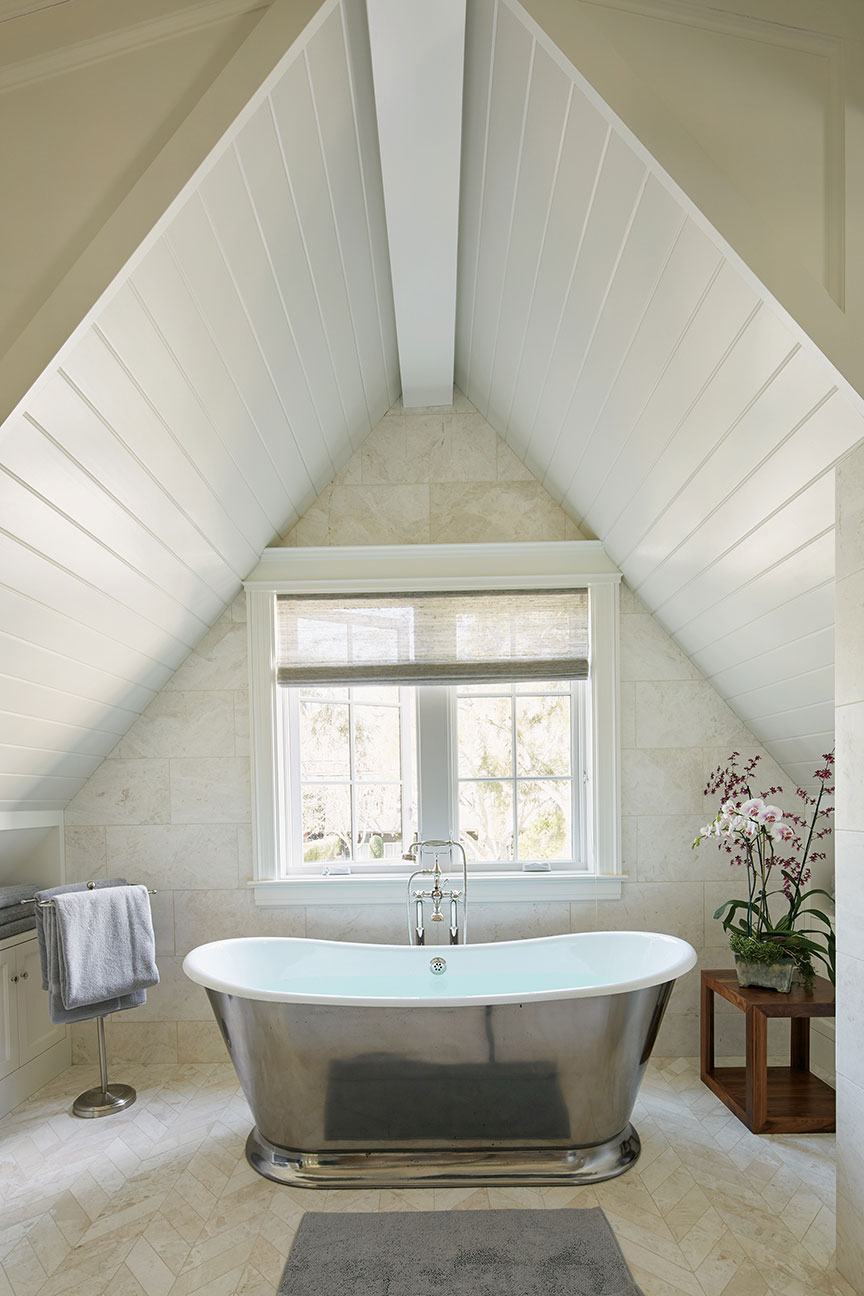
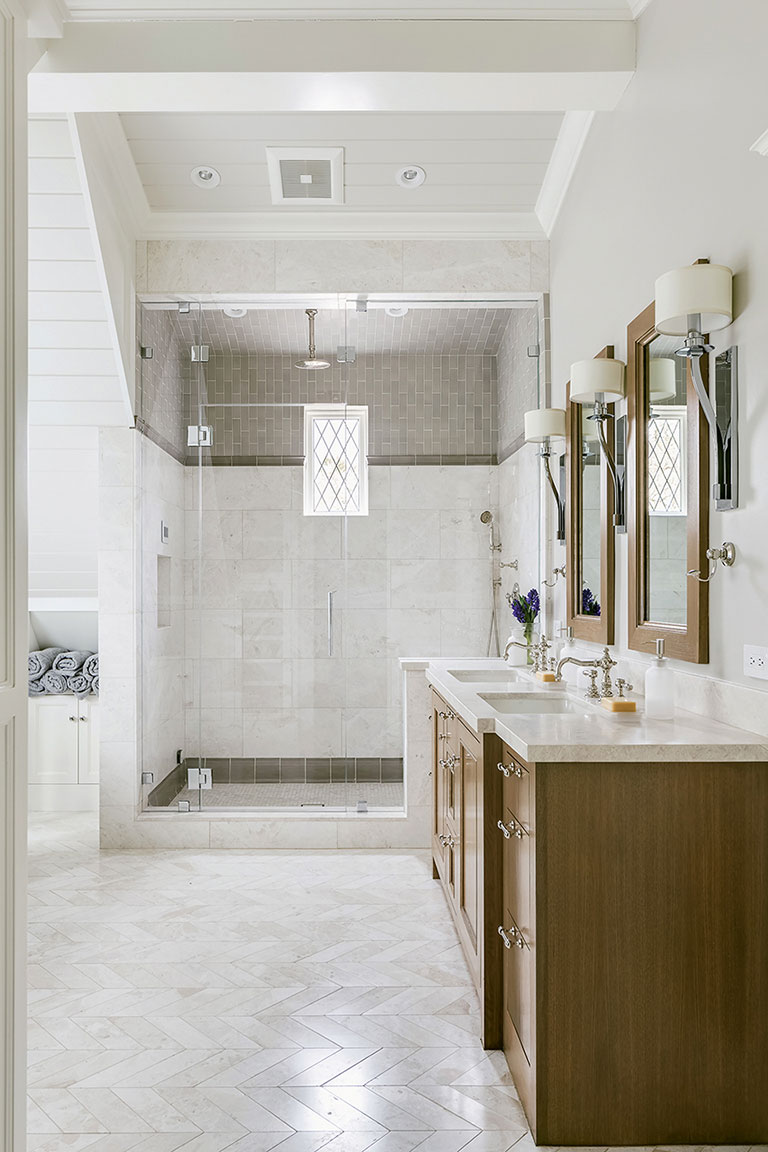
Light, spa-like master bath with chevron marble floors and a Waterworks Margaux burnished nickel freestanding tub in a Tudor home in Palo Alto, California. Photos courtesy Roger Davies.
This summer, Lindsay Chambers will debut a 25-piece furniture line at a new showroom located in the West Hollywood design district. She says the collection will keep a soft contemporary taste and will feature coffee tables, woodwork-based items, dining room tables, beds and other basic fundamental pieces. Similar to the size of her firm, her furniture line will remain boutique-sized, making it easier for Chambers to stay involved with all her projects and “keep [her] hands on everything.”
Her hands will have lots to do as she continues to work on getting the showroom ready for the summer debut, as well as working with clients. She is currently working on helping a Stanford history professor renovate her home on the university campus.
With so much happening presently, Chambers still keeps a determined eye on the future and where she would like to see Lindsay Chambers Designs go, which is not too far. When asked where she would like to be in five years, she says “right where I am” with her offices in West Hollywood and in the San Francisco Bay area. Along with her desires to design a restaurant or hotel, she hopes to reach farther with the furniture line and expand the number of showrooms across the U.S.
Q&A:
Favorite and least favorite aspect of the job?
Favorite aspect: Defining a vision with the client.
Least favorite: Invoicing.
What is the most important element you have to include or remember to keep in any home?
Durability of the kitchens and baths. Some of the most beautiful design materials are not always the most durable. For instance, if a client wants to incorporate white marble as a countertop in the kitchen, I encourage them to have a portion of the counter in another material so they have somewhere to chop vegetables and pour red wine that won’t stain.
What kind of design trends do you want to see in the future?
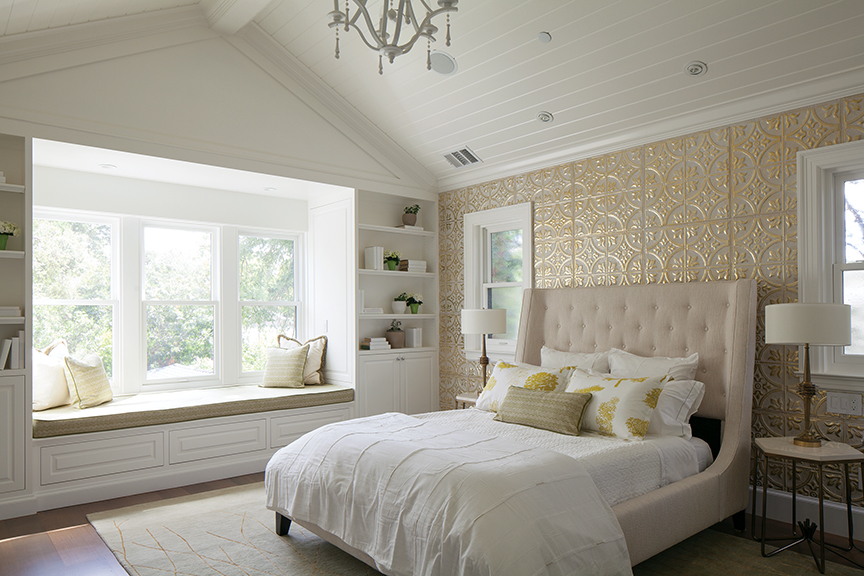
Master bedroom with gold and white washed tin ceiling tiles applied as the accent wall, in Palo Alto. Photo courtesy Roger Davies.
I hear the 90s are back which means green should be coming back in. I like green so I am happy to see it starting to show up in design again in a significant way.
What colors do you like to play with the most?
I have to admit I am a fan of gray, which is no surprise if you have seen my work. When I bought the book 50 Shades of Gray at the airport, I honestly thought it would be about an interior designer. First 10 pages into the book and I start to hide it from the man sitting next to me on the plane because I realized how wrong I was!
What advice would you give to someone going into interior design or starting his or her own firm?
If you are going to start your own firm, don’t dip your toe in the water to test it out. Dive in with both feet and give it your best shot from the beginning. Go for it!
Unveiled recently at the neoclassical Palazzo Serbelloni, leading quartz manufacturer Caesarstone presents “Stone Age Folk” by Jaime Hayon, the pinnacle event of their year-long collaboration with the world renowned Spanish designer for the 2017 Designer Collaboration Programme. Inspired by flora, fauna and folklore from different cultures, Jaime Hayon designed an architectural pavilion, which references the famous Crystal Palace built in Hyde Park, London for the Great Exhibition of 1851, combining over 40 Caesarstone colours with metal and stained glass.
Within the historical backdrop of the Palazzo’s Ballroom, Caesarstone’s quartz material was meticulously handcrafted and implanted into the metal frame of the pavilion as a precious jewel within Hayon’s whimsical Caesarstone universe. Employing traditional high-end stone marquetry and stained glass window techniques, the designer imbued the space with his eccentric spirit and artistry to create a fantasy world made of different colours, forms and shapes. This fantasy world is inspired by the natural environment, the animal kingdom, and folklore of different cultures, ranging from Hungarian myths to African tribal influences.
Tribal masks and Hayon’s signature clowns faces are featured on large-scale wall panels and presented alongside playful carousels made of Caesarstone, handcrafted furniture pieces and light fixtures. Further demonstrating the versatility of Caesarstone’s material, through the lively, visionary eyes of the designer, dining tables, small coffee tables and cabinets became bird-like characters and animated faces. Together, all the pieces contribute to the kaleidoscopic feel of the installation and enable the visitor to playfully interact with the material in a fresh, unexpected way.

“The kitchen space is continuing its journey to the centre of the home and, what used to be the family’s meeting point, is turning out to be a “future living room”, a place where we entertain and host. As such, I feel that the kitchen space will become more expressive and personal and we will see designers and consumers’ increasing adoption of maximalism and material richness to confer a unique and personal look and feel to the kitchen. We are inspired by the visionary work of Jaime and the way this demonstrates the ‘boundless boundaries’ of our materials and their application. I am proud to work for a company that creates a product that generates emotions.” Raanan Zilberman, CEO of Caesarstone
“A combination of art, design and architecture, this kaleidoscopic installation will be something that visitors have never seen before. There is a strong element of surprise in the visible contrast between the Napoleonic, marble-made palace and this beautiful pavilion, made with 21st century Caesarstone’s quartz. Visitors entering this fantasy world will see the Caesarstone material perform in a way that incites new levels of creativity and have an amazing visual image of its ‘arty’ and luxurious qualities. I hope, with this very graphic and folkloric installation, to put a smile on people’s faces and compel them to think that they are in Milan for the furniture fair, but they have just seen a ‘funtastico’ world.” Jaime Hayon, Designer
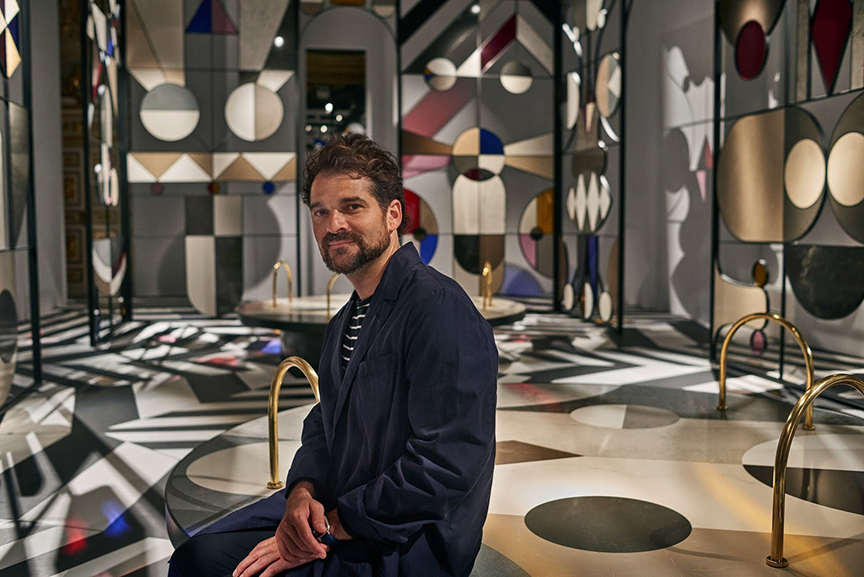
Photo credit to Tom Mannion.
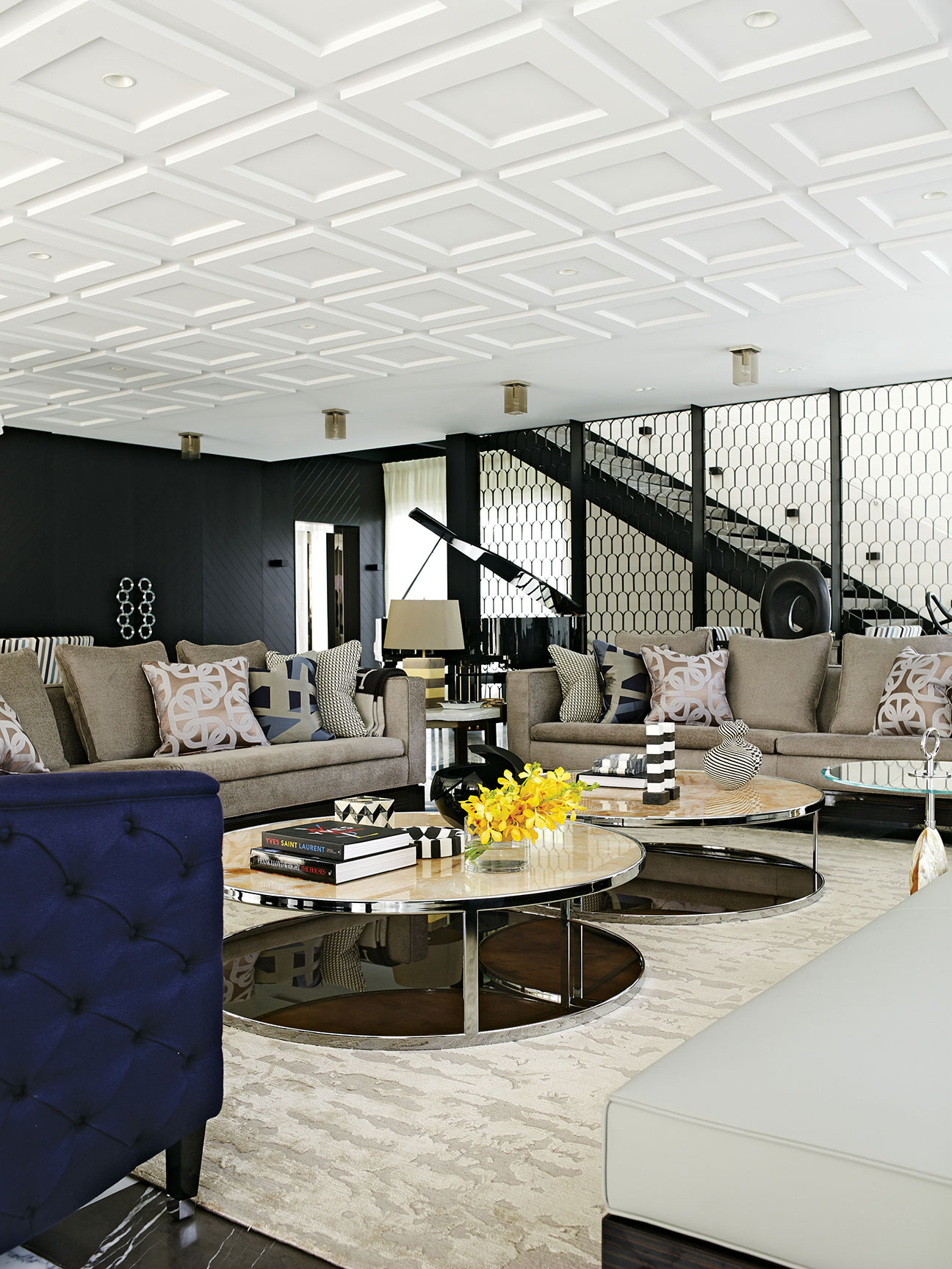
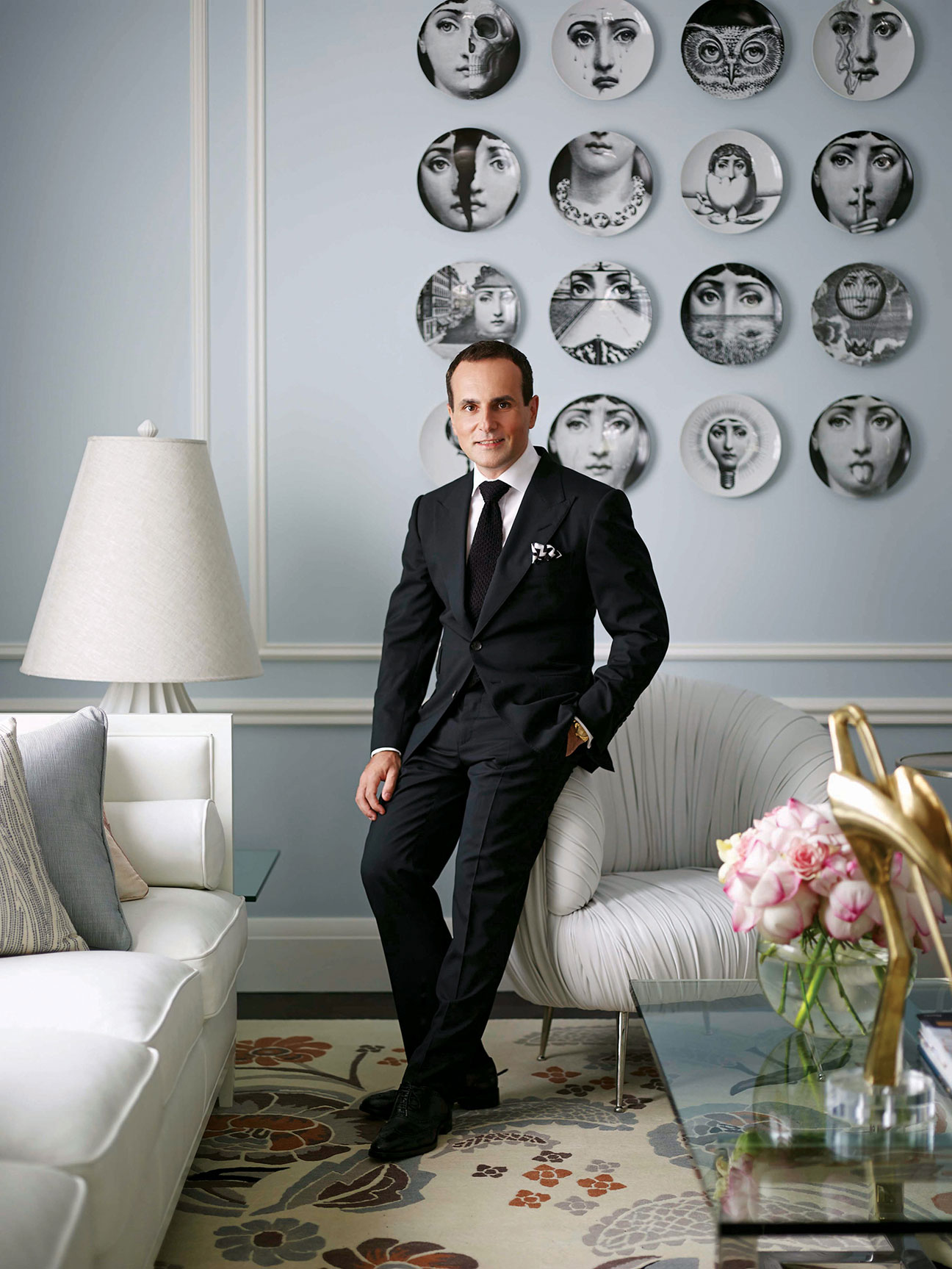
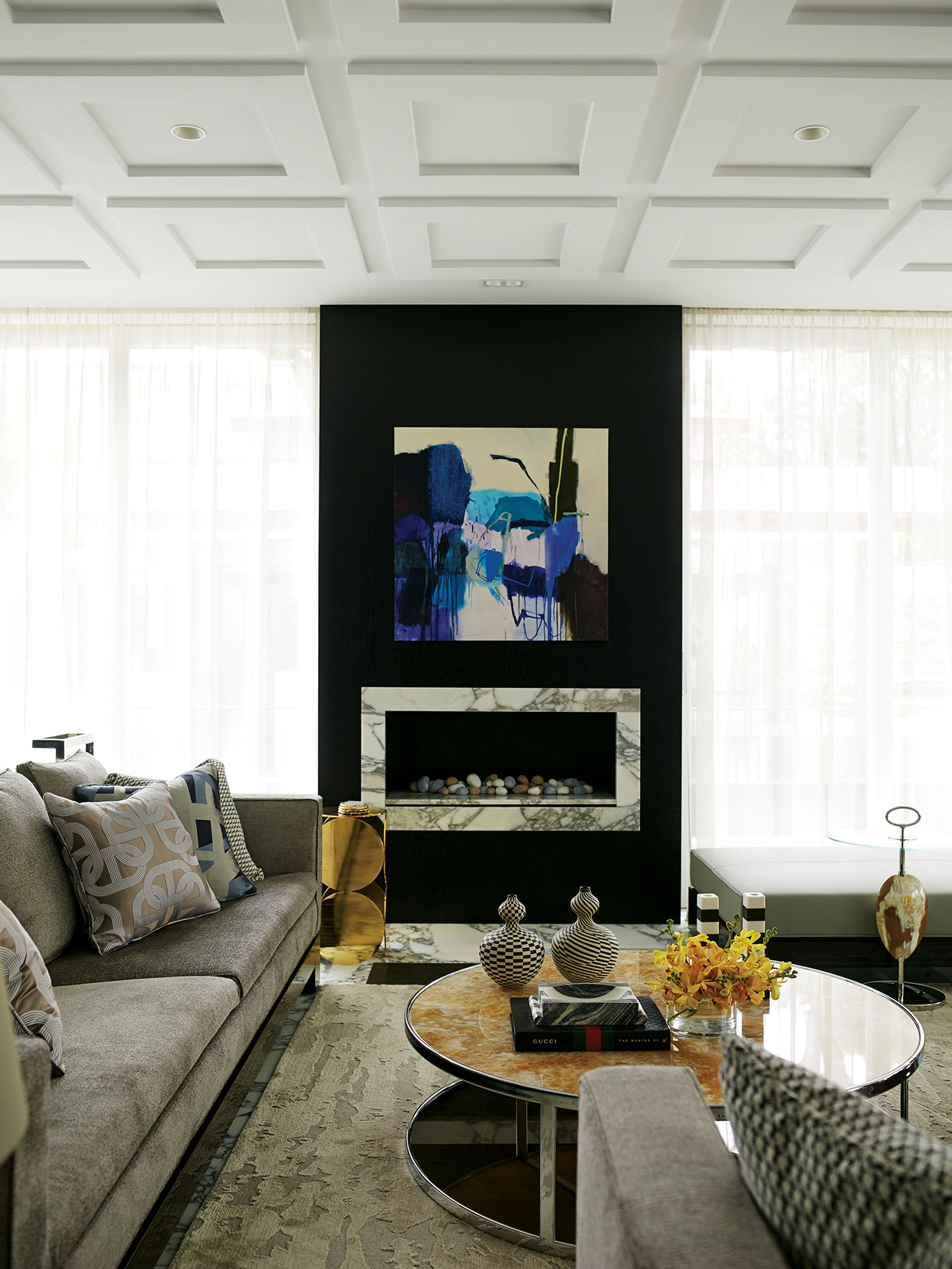
By Sarah Binder
GREG NATALE’S BOLD, TAILORED, AND SOPHISTICATED APPROACH PUTS HIM IN HIS OWN
CATEGORY, AND HAS LED TO HIS RECOGNITION AS ONE OF AUSTRALIA’S MOST ACCLAIMED DESIGNERS.
With a new tile collection debuting later this year, two new rug collections and a second carpet line launching next year, and a major refurbishment of a hotel nearly completed, Greg Natale is the design world’s equivalent of the Energizer Bunny, if it just so happened to live Down Under.
The Sydney, Australia-based interior designer embarked on his solo career with a project that others may deem low-key — designing his sister’s one-bedroom apartment. Natale made a splash by transforming it into a multi-award-winning space.
“I installed wall-to-wall, custom-colored Florence Broadhurst wallpaper, layering it with matching artwork and linen,” Natale, founder of Greg Natale Design, says. “The apartment was published in Australian Belle and the UK magazine Wallpaper* and won me my first award, the 2002 Belle Wild Card award, a category created especially for me. Since then, I haven’t looked back.”
Self-described as being “obsessed” with the realm of design since he was young, Natale grew up fascinated with the worlds he saw on television and in film. “The incredible settings showed me that there were endless creative possibilities and inspired me to design my own amazing spaces,” he explains.
Natale studied interior design at Sydney’s Design Centre Enmore, followed by visual arts at Sydney College of the Arts, and architecture at the University of Technology Sydney. In 1996, he received his first break at a residential design firm as a junior interior designer. From there, he worked in two more commercial firms before launching Greg Natale Design in 2001…
Click here for the full story as seen in the fall 2016 issue of Homes & Estates.
